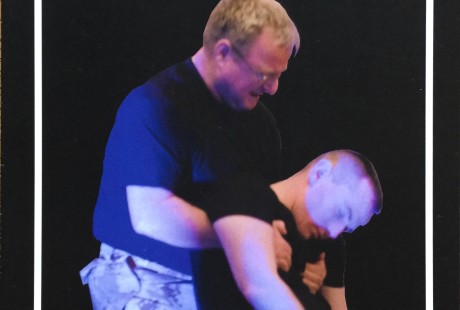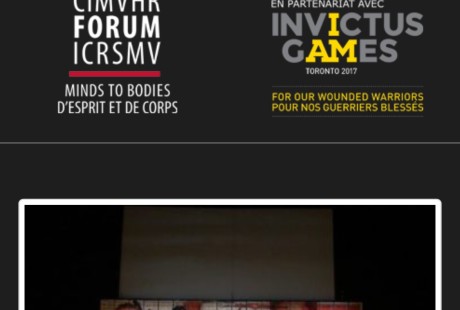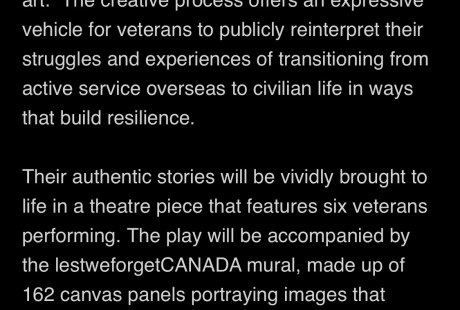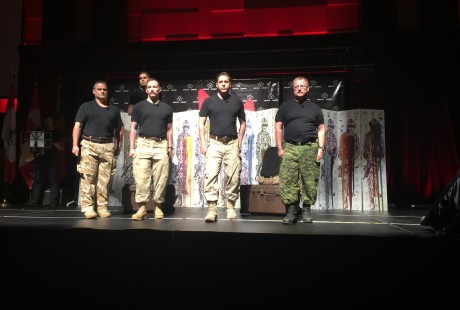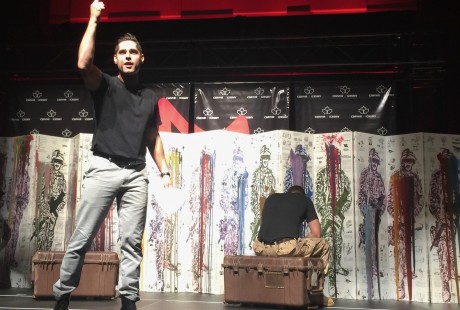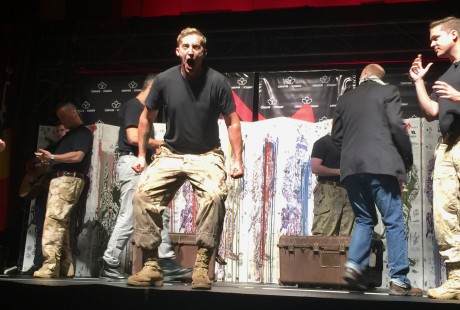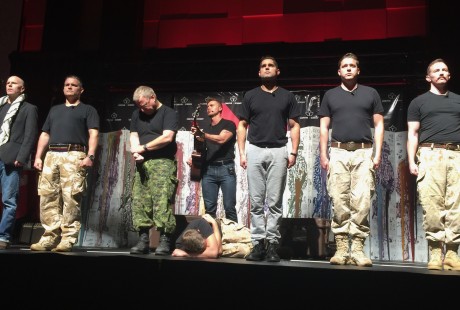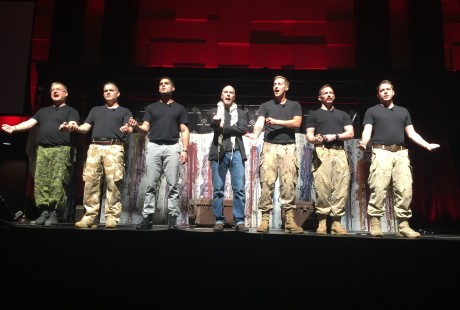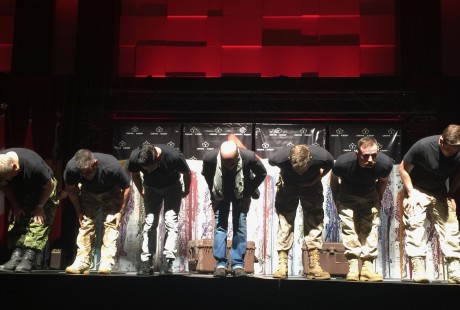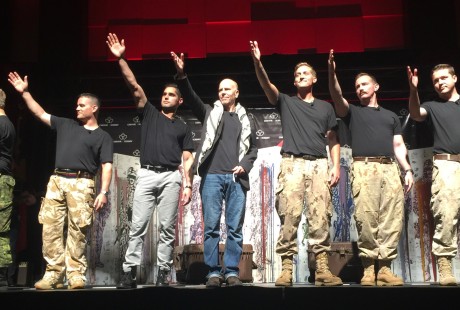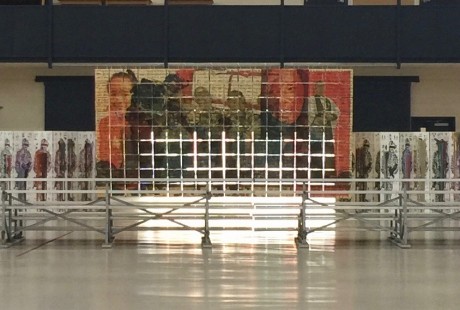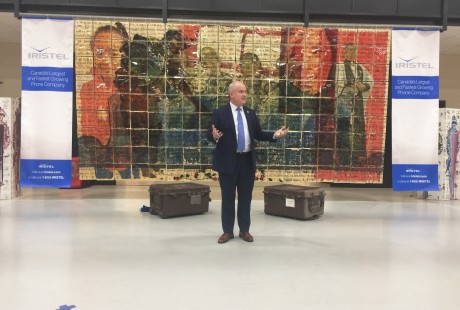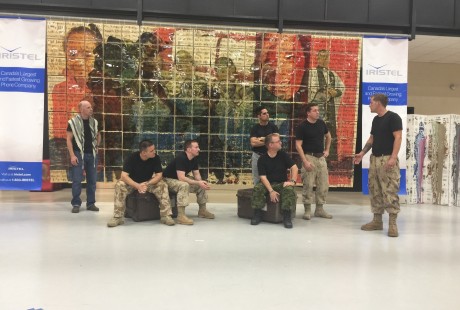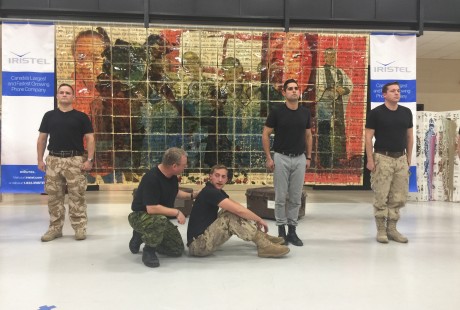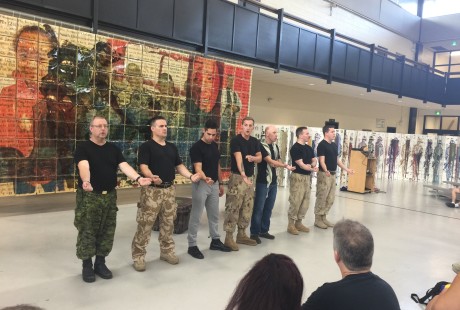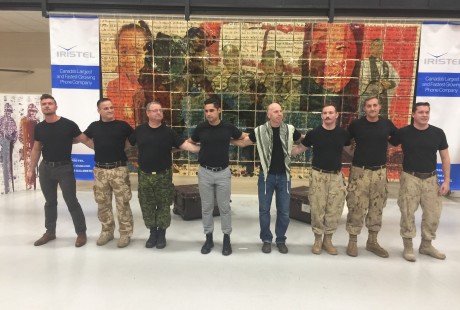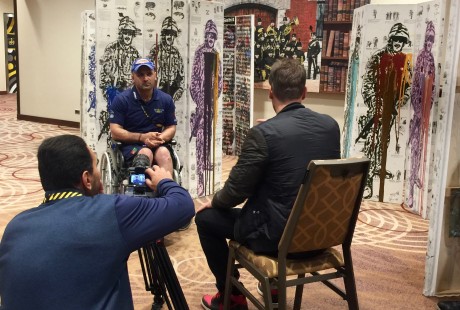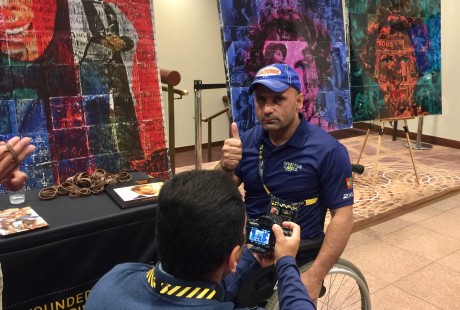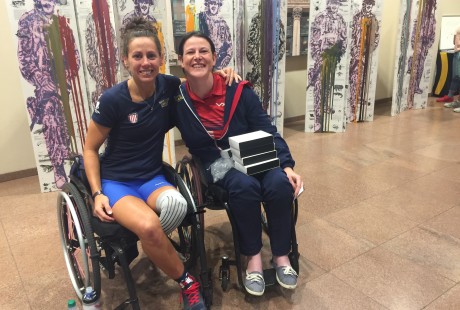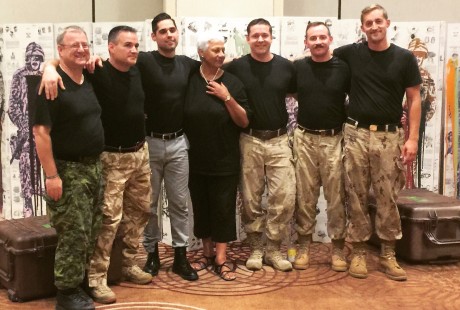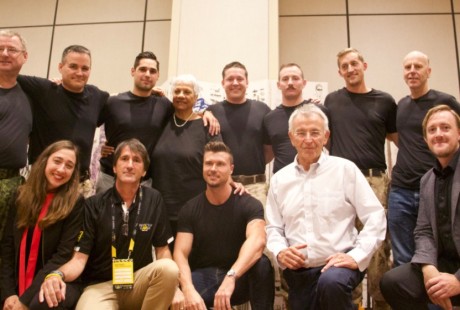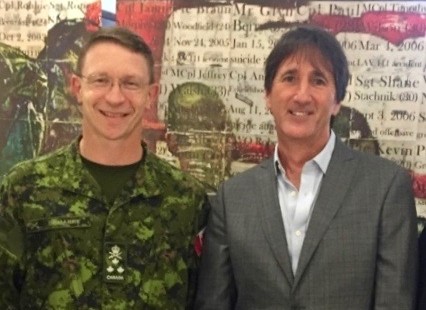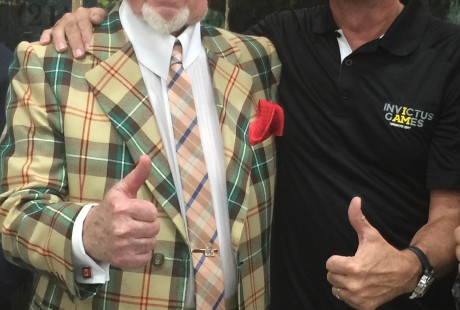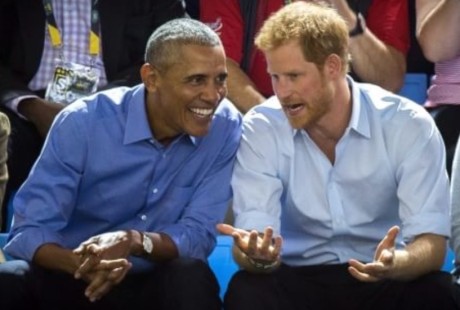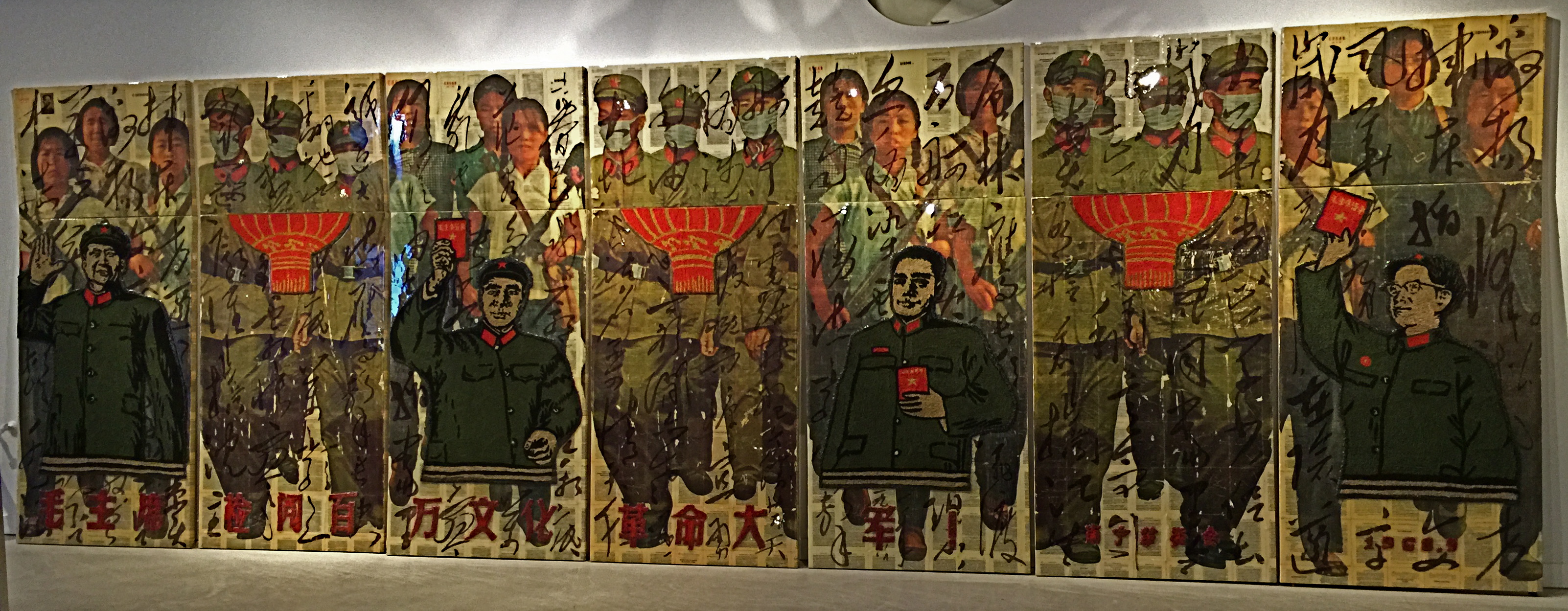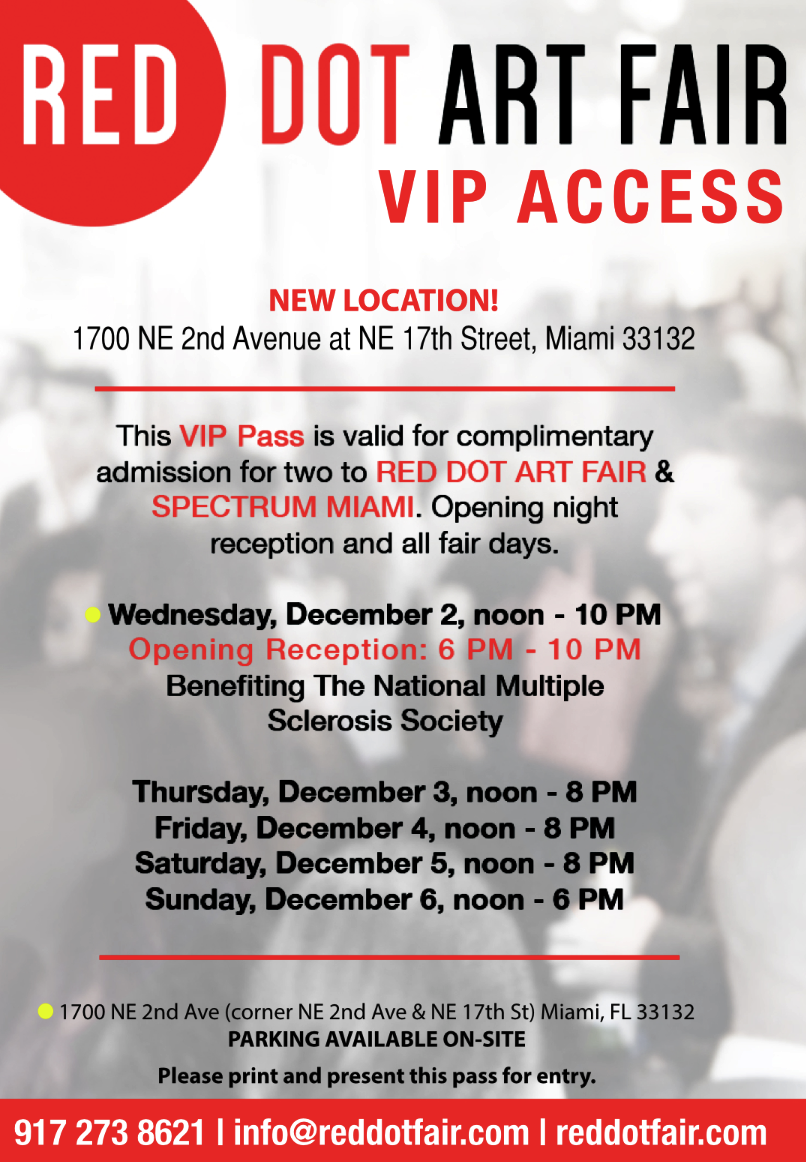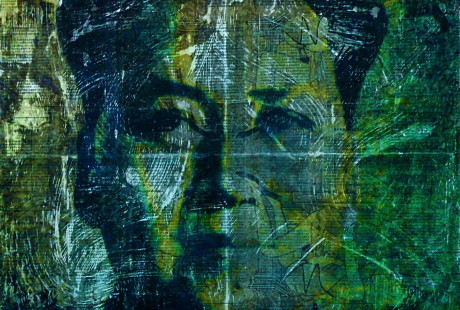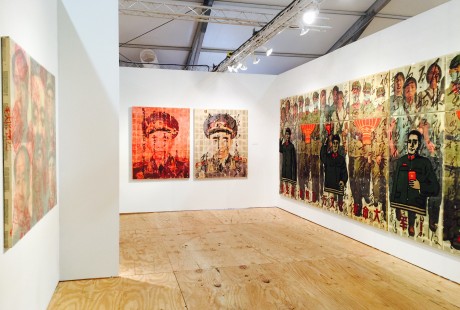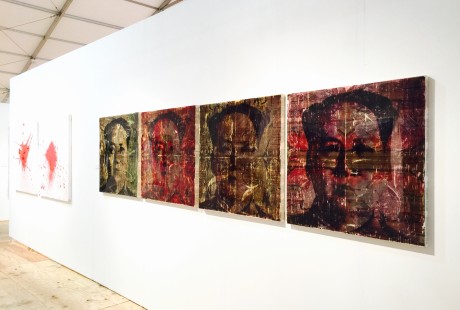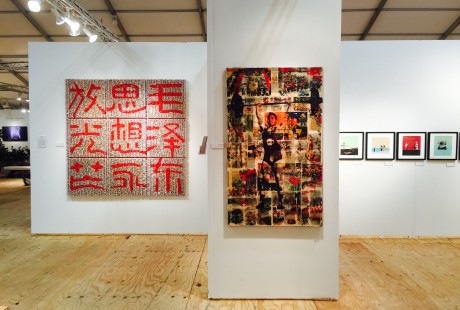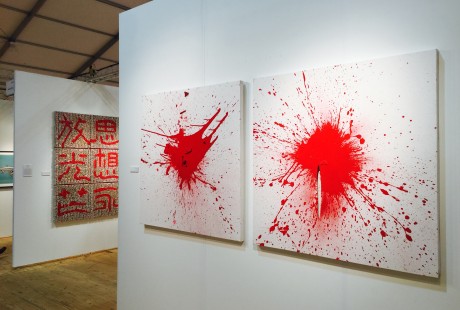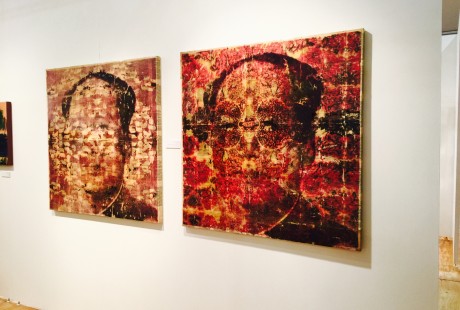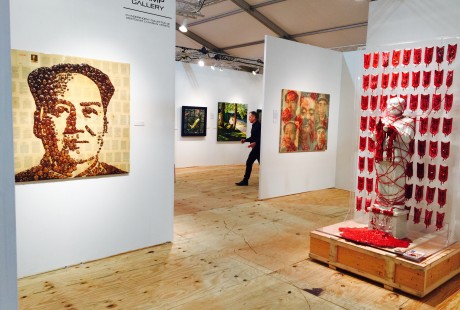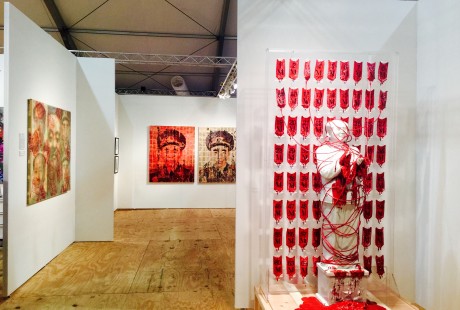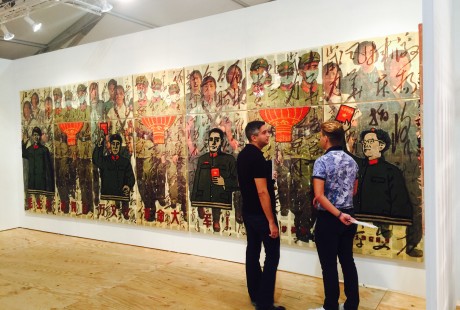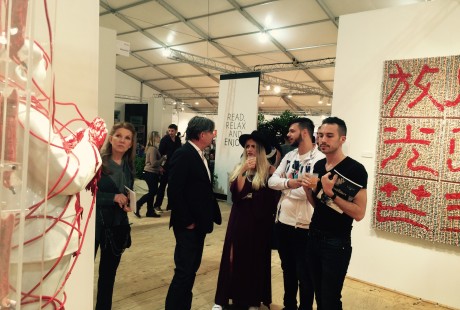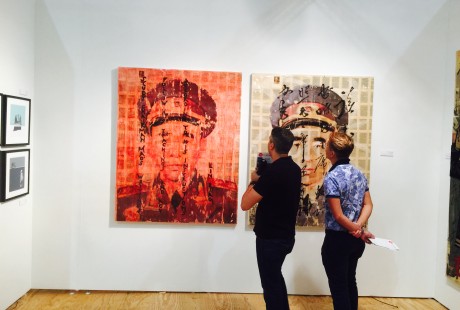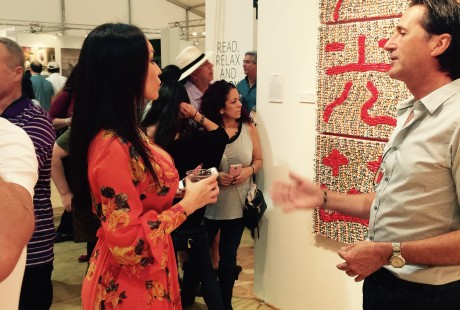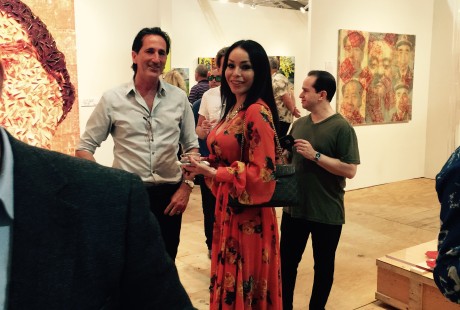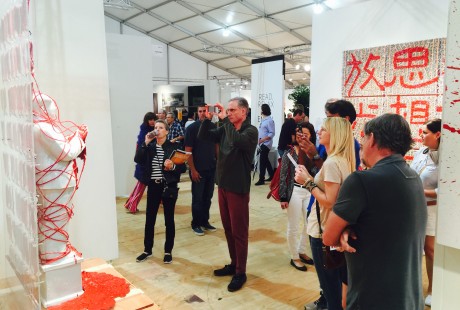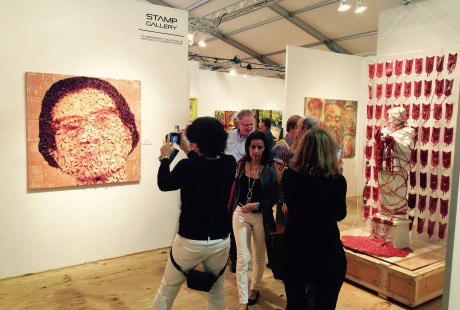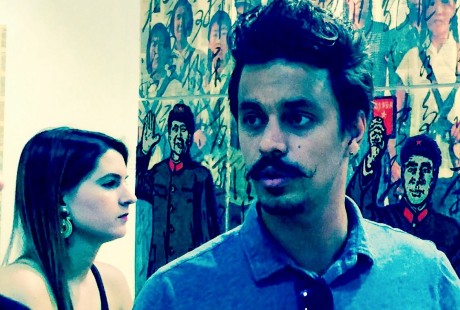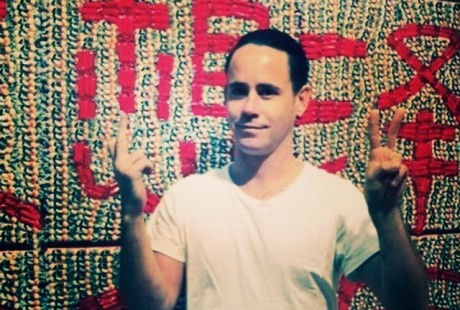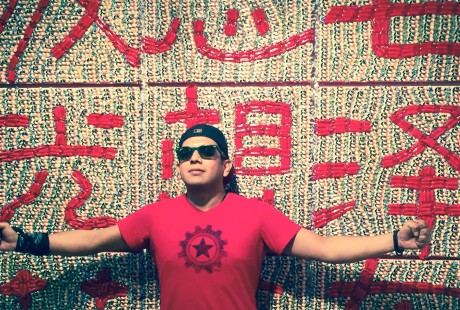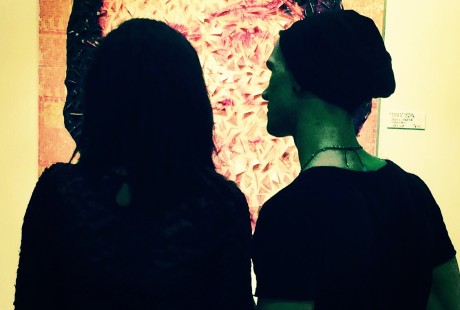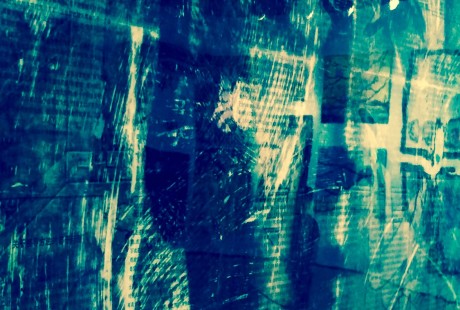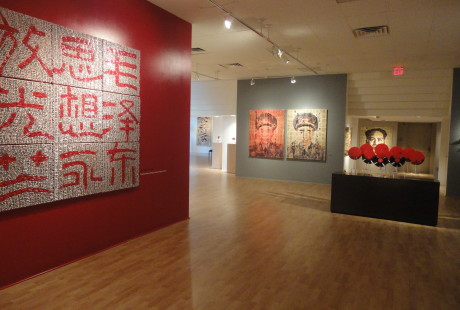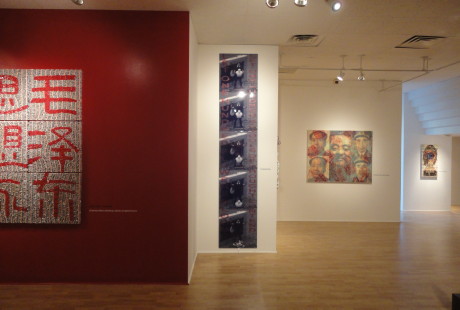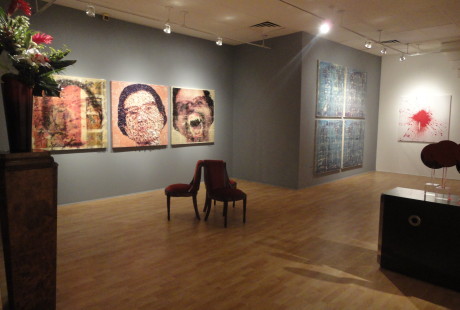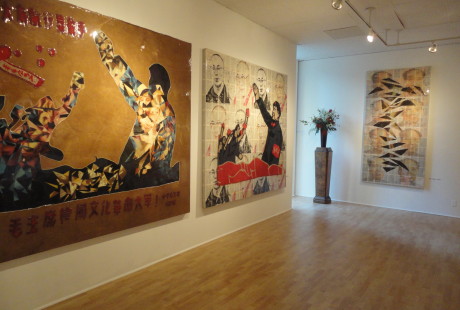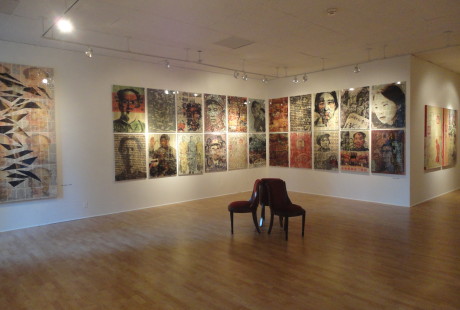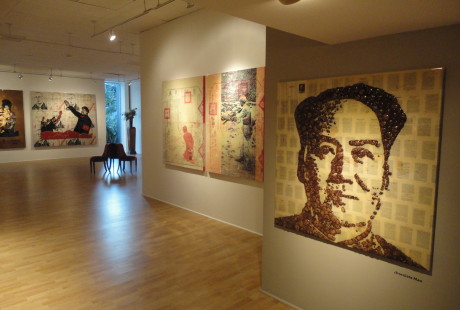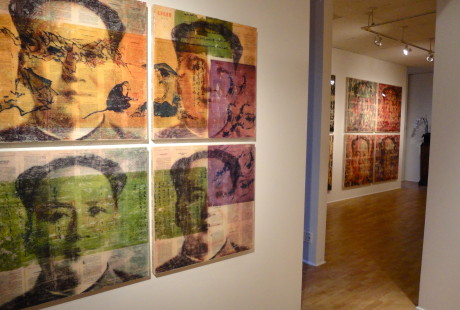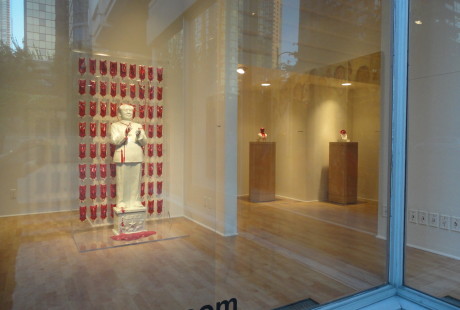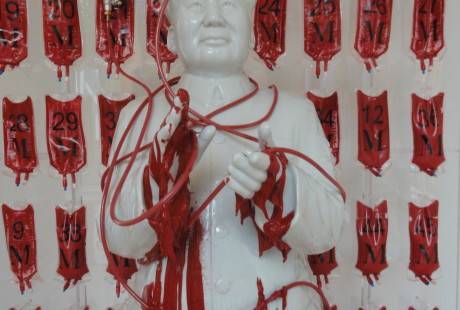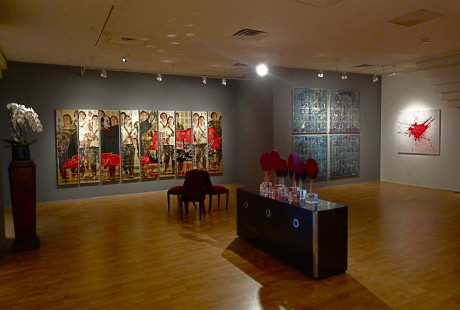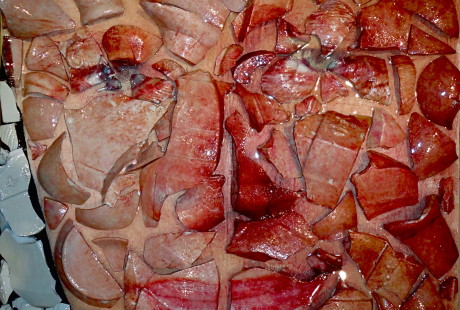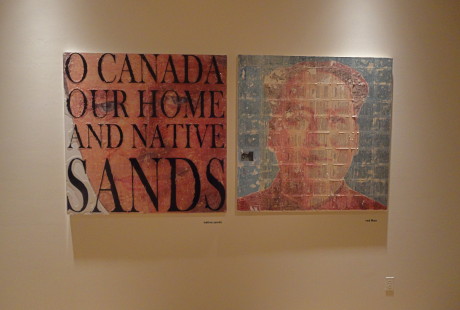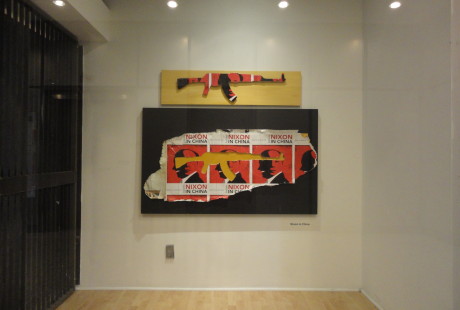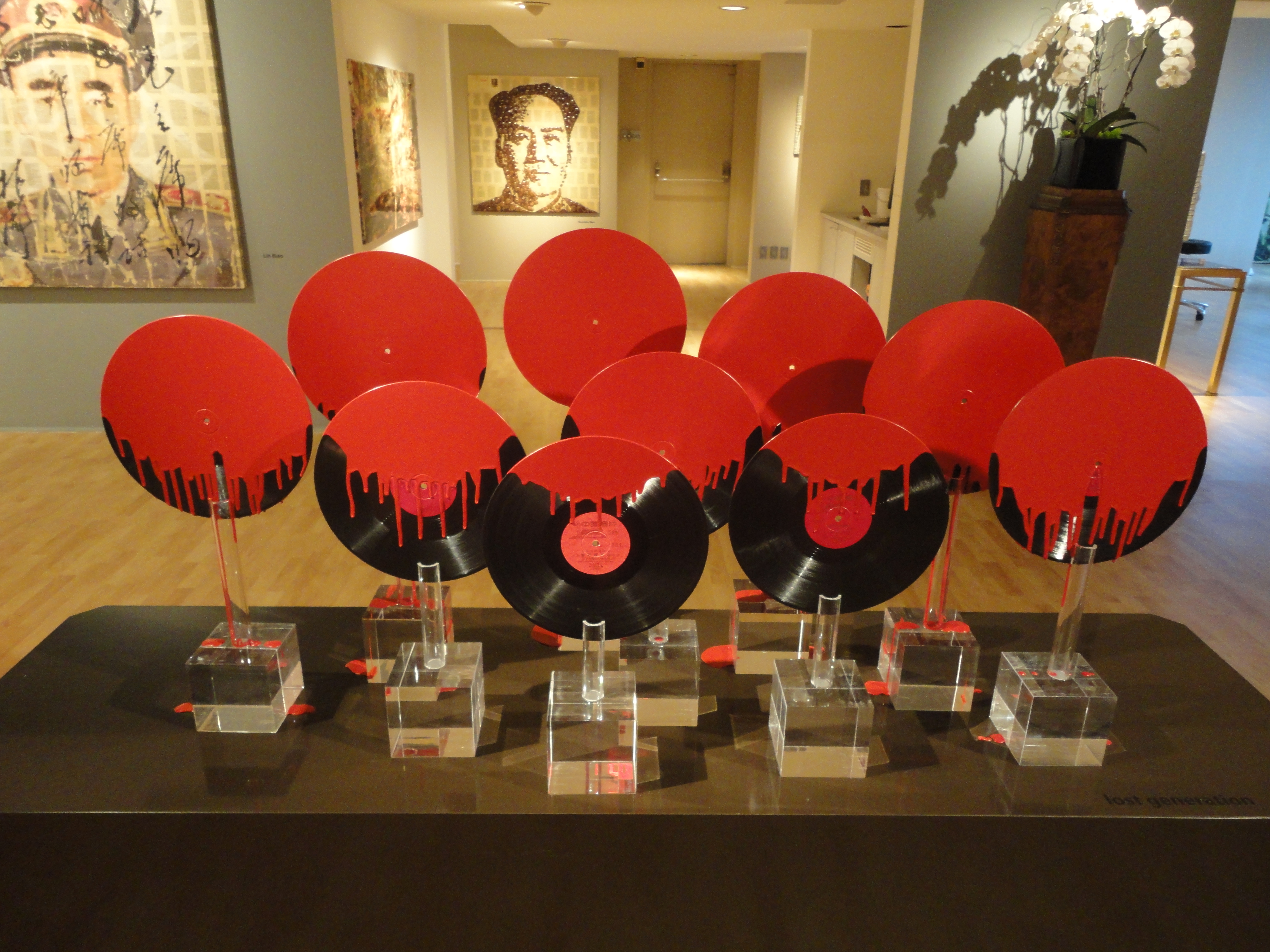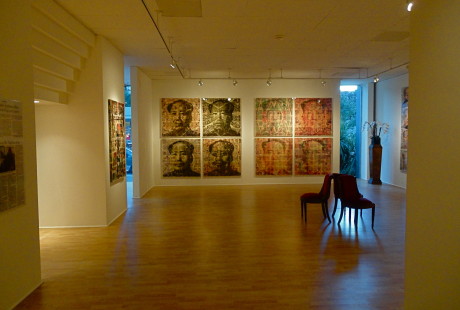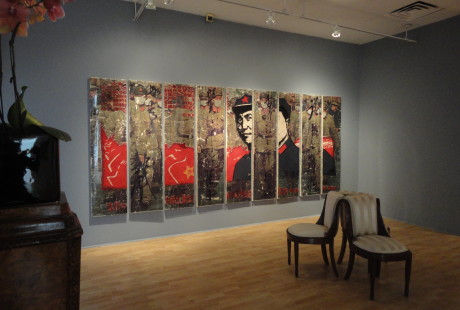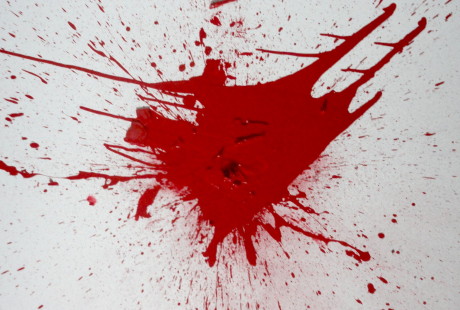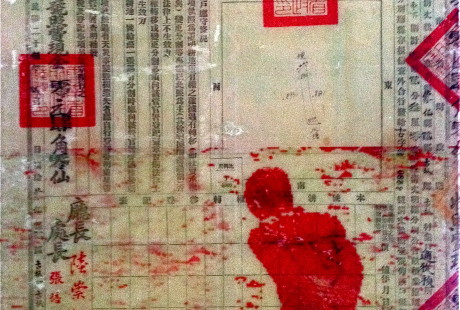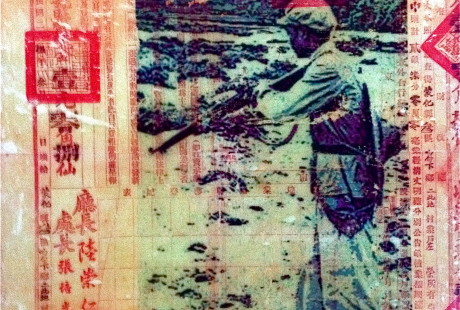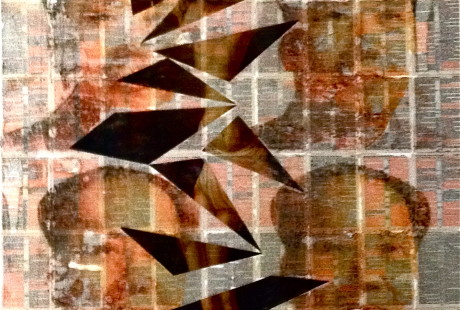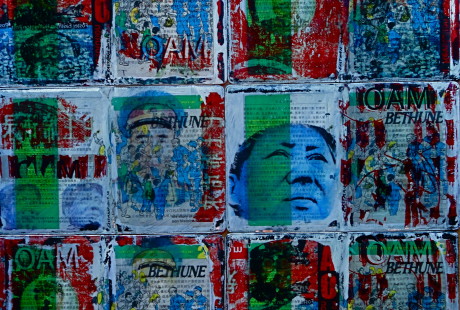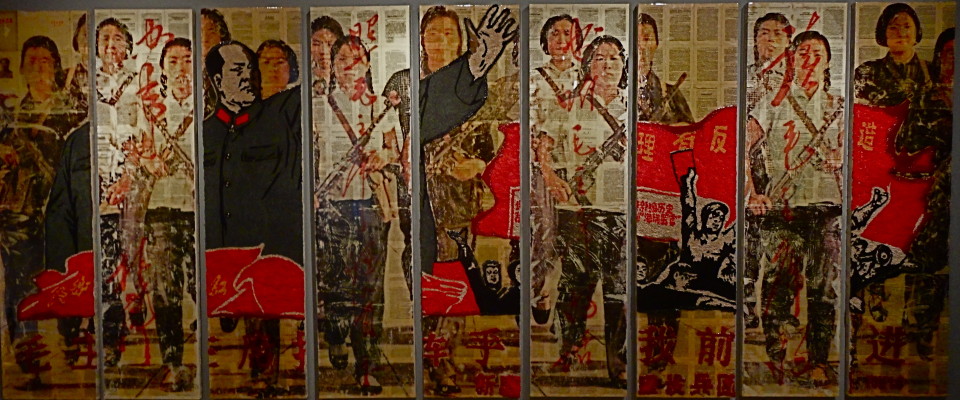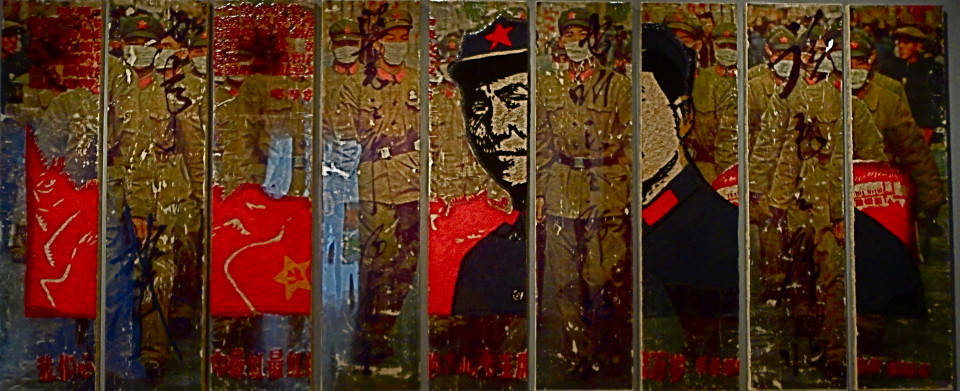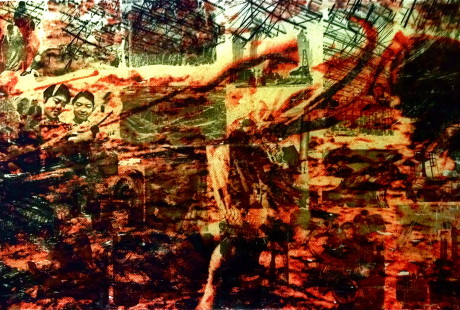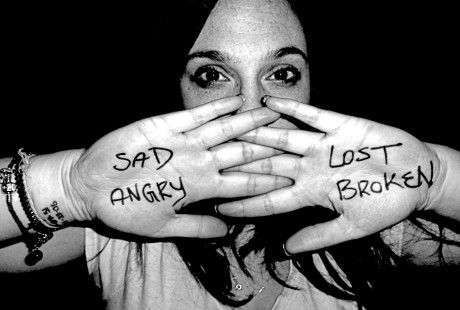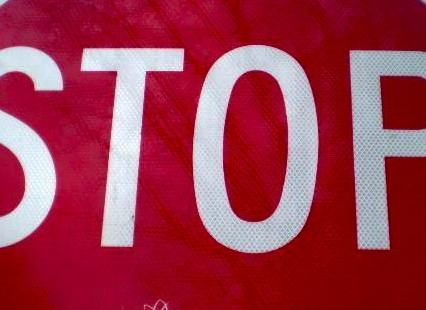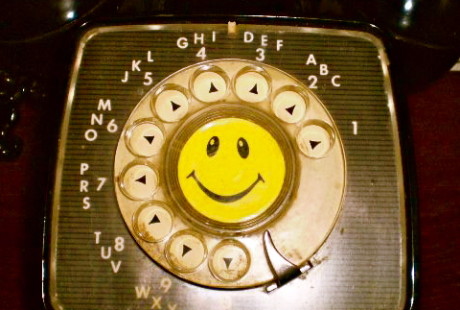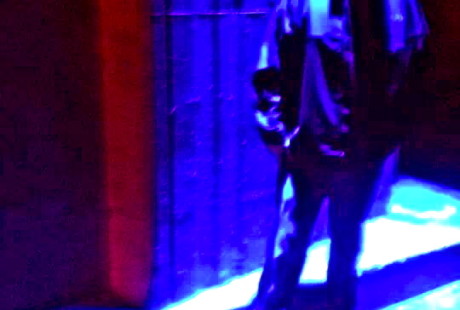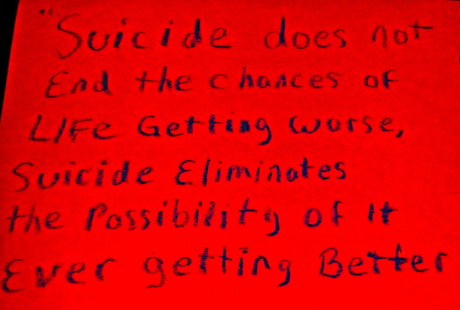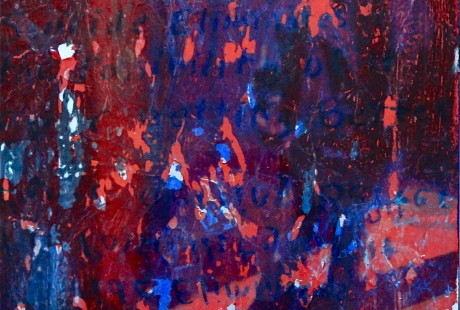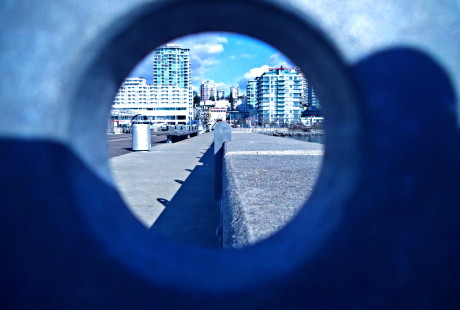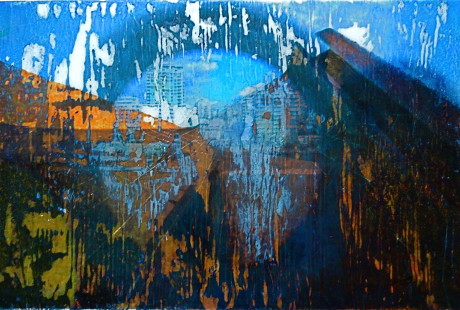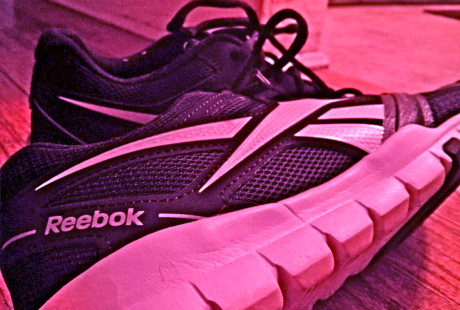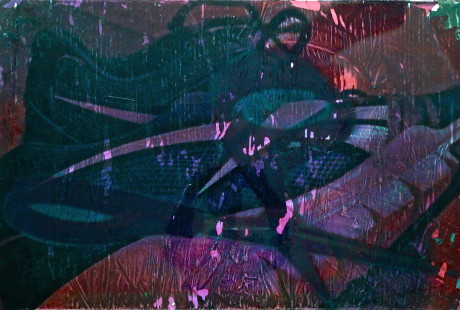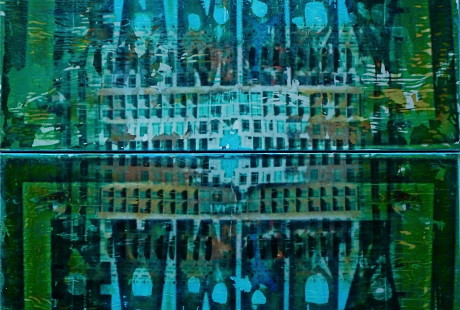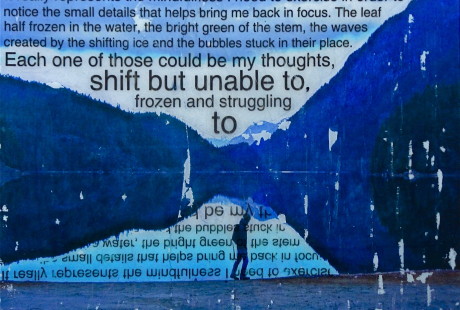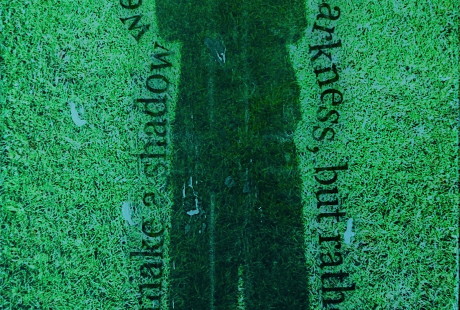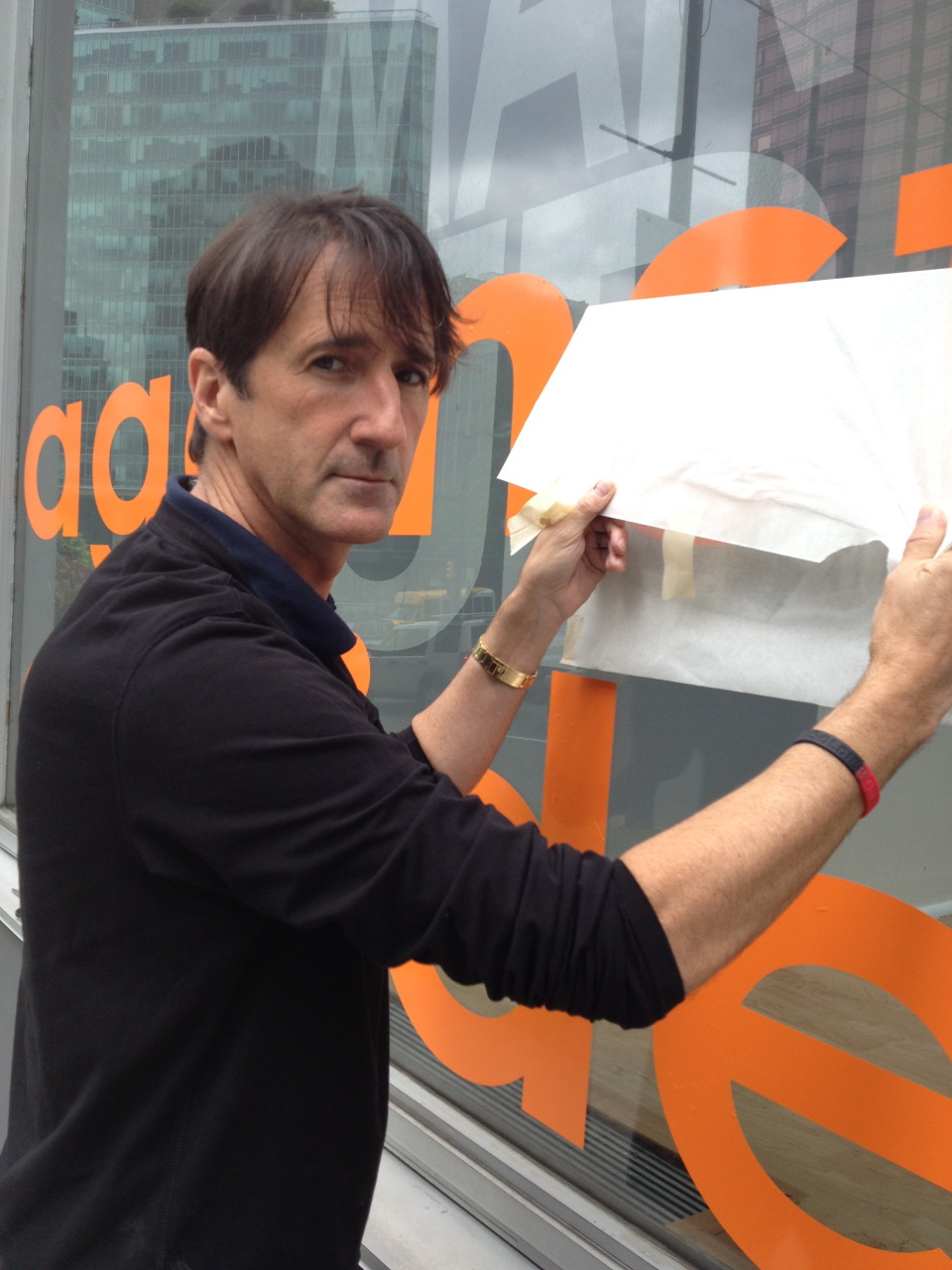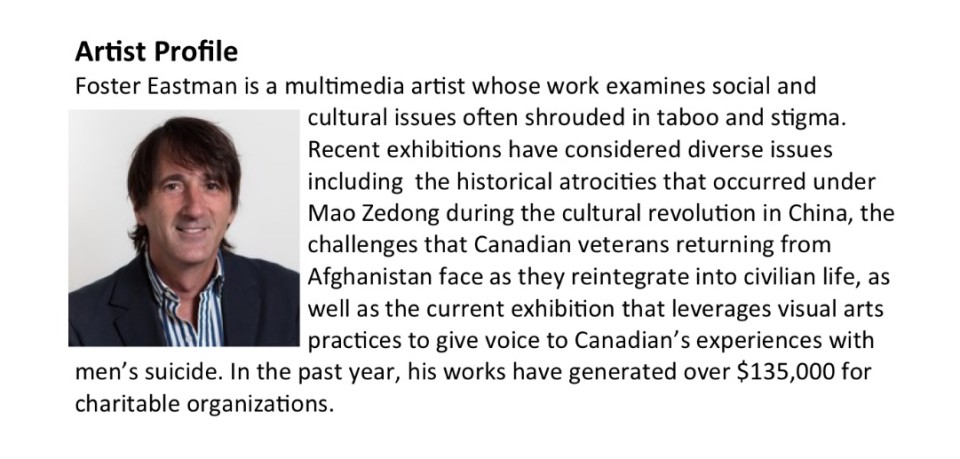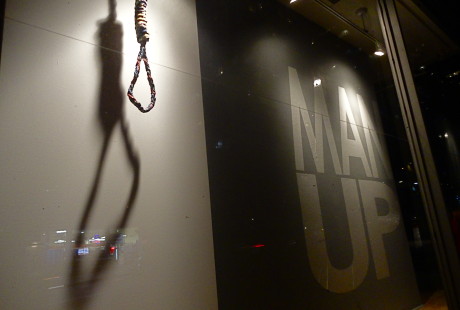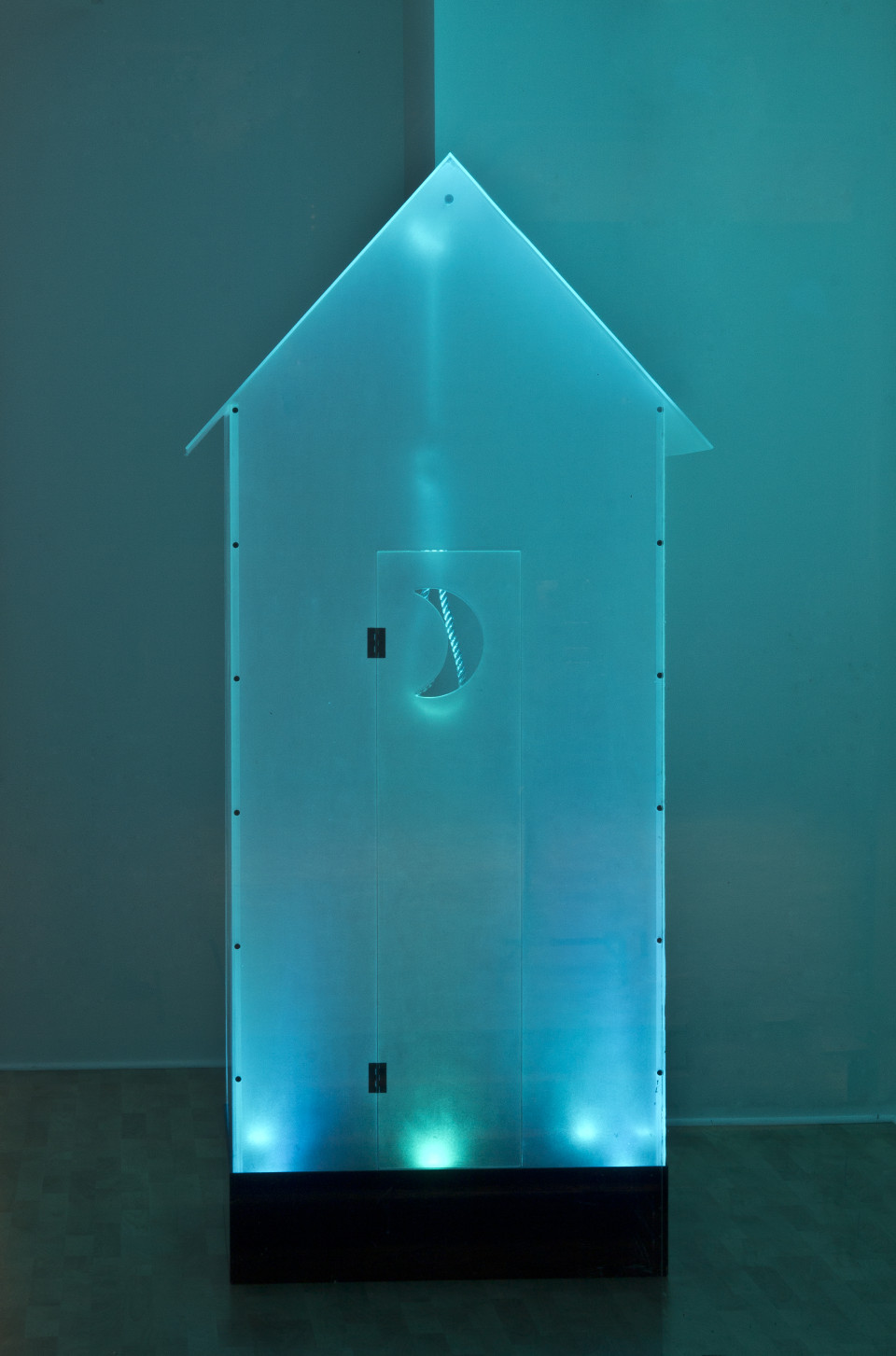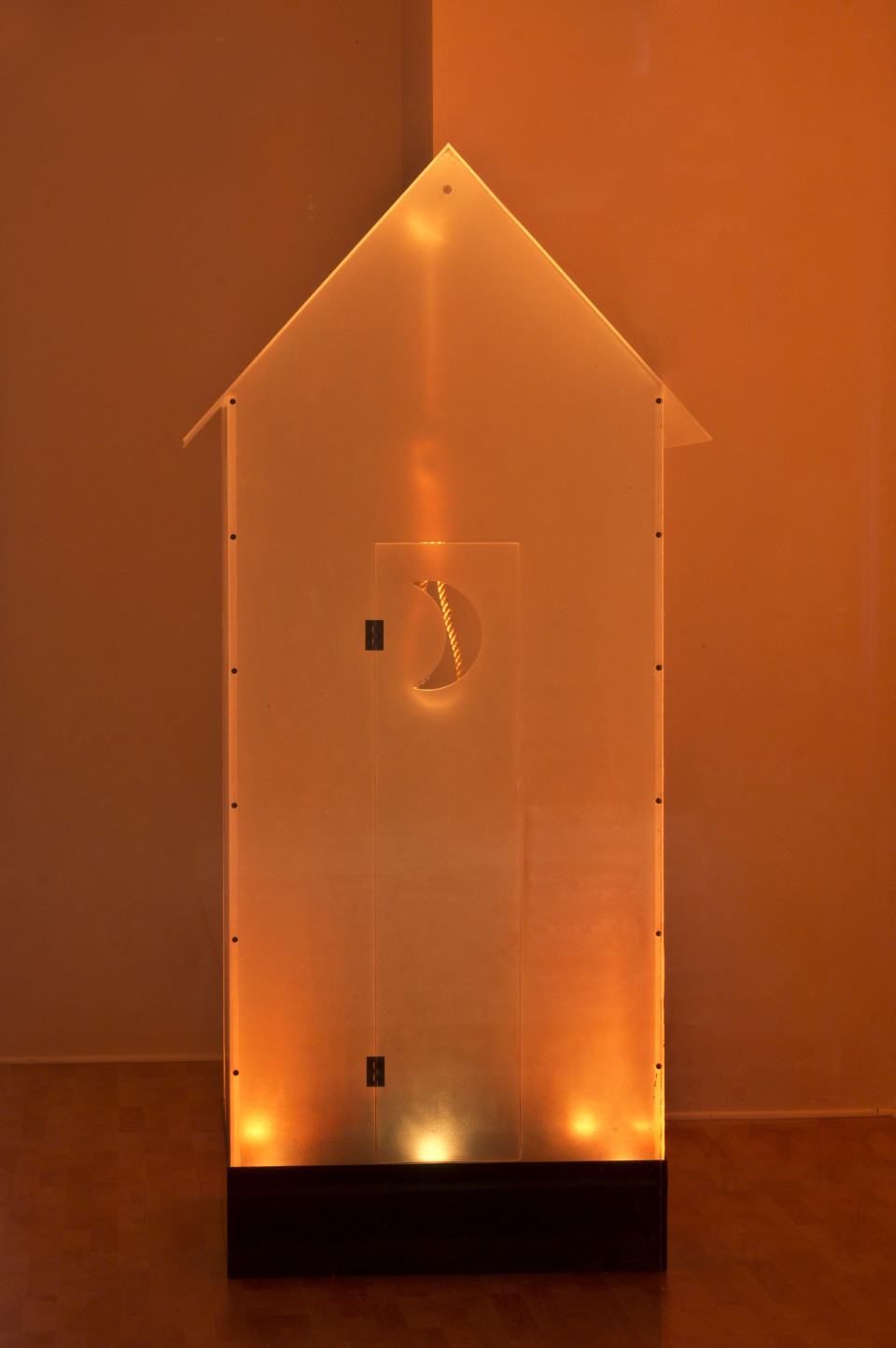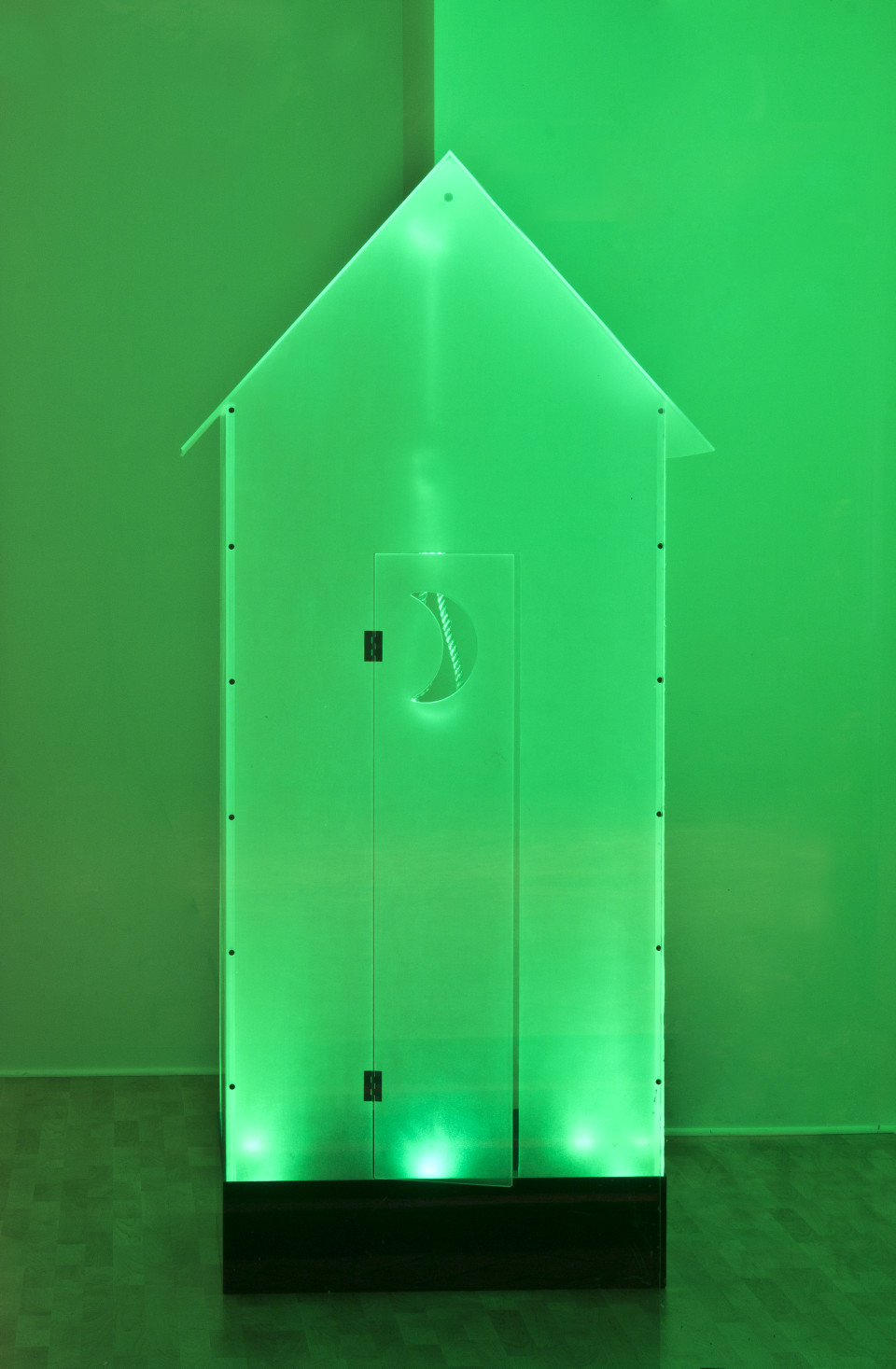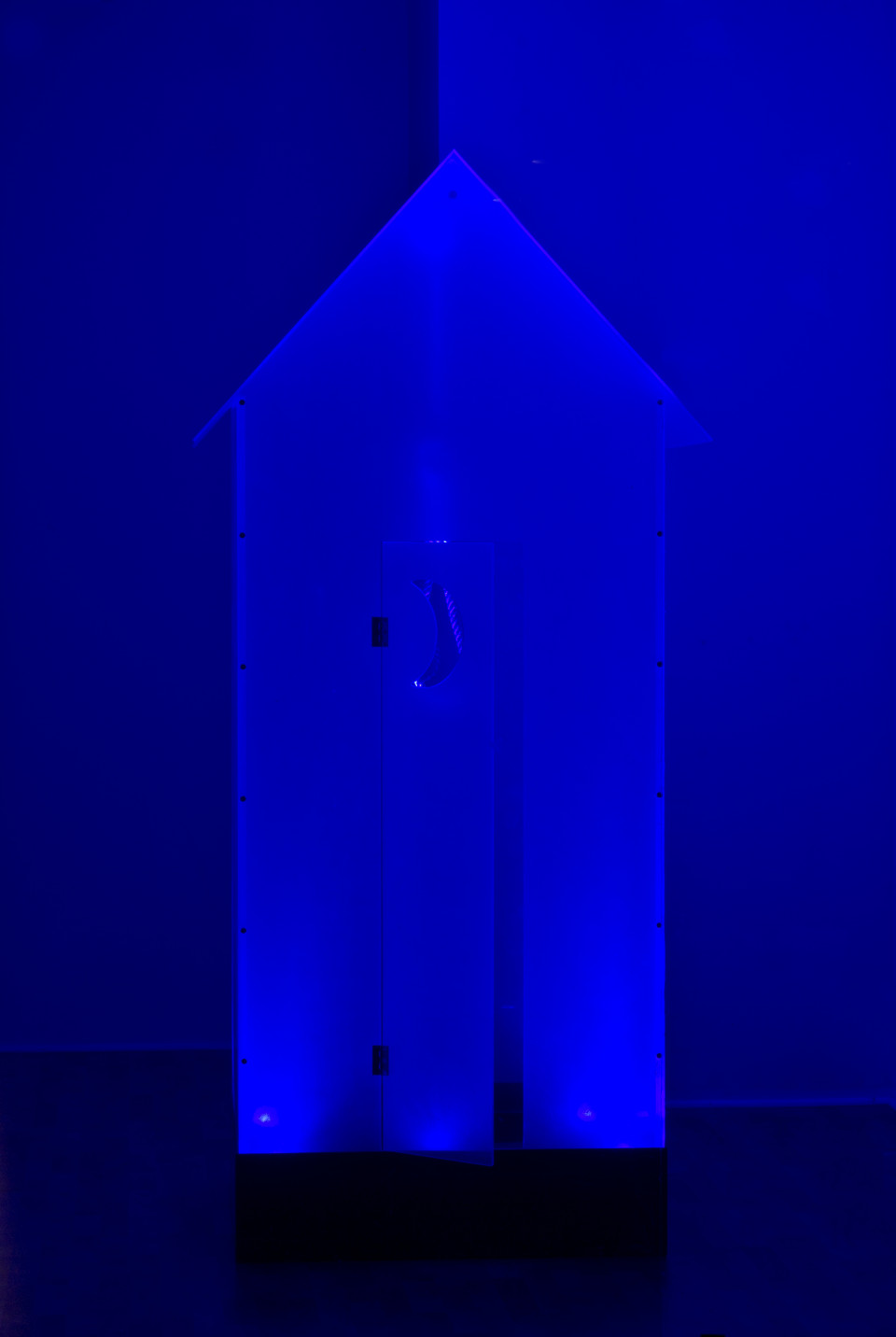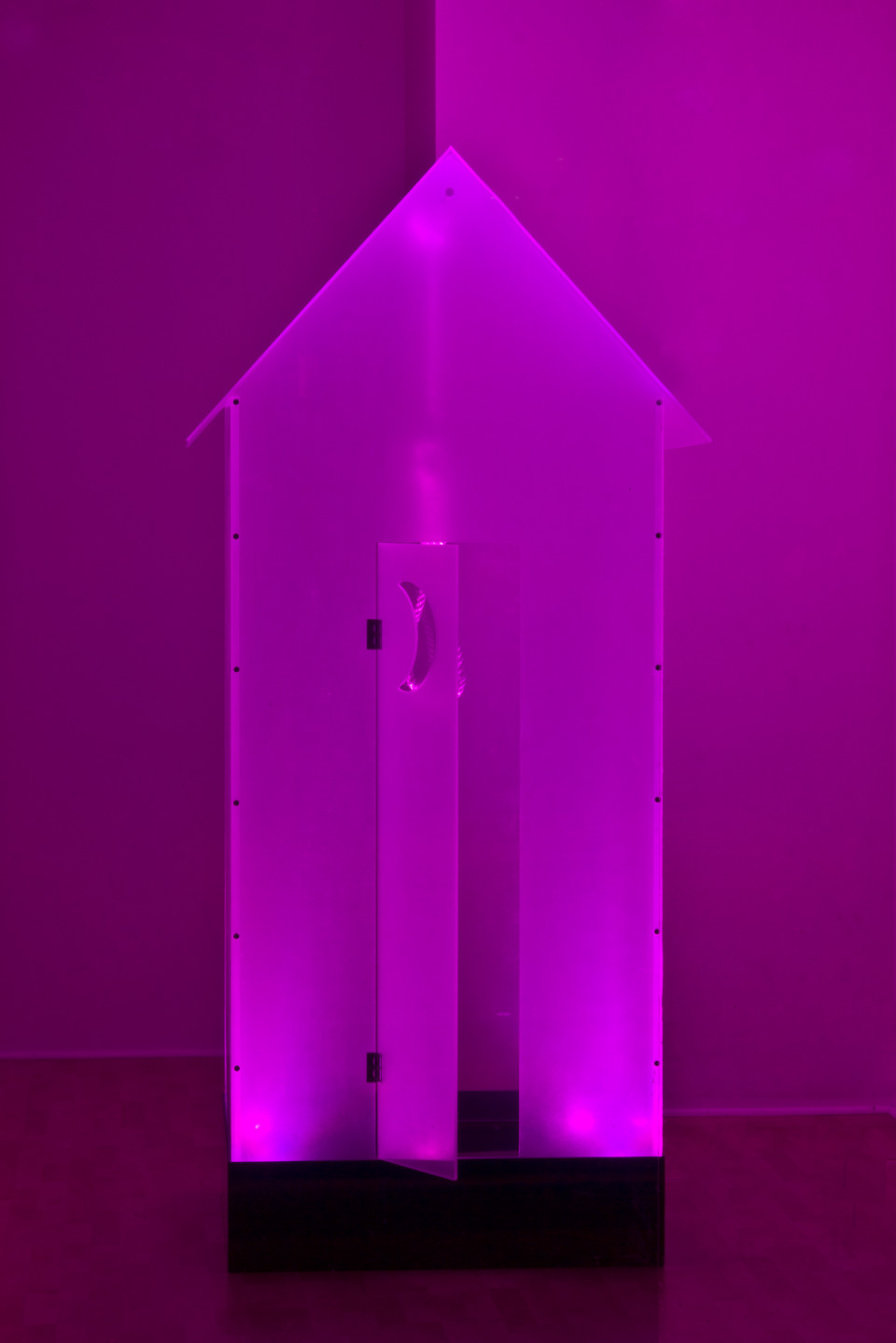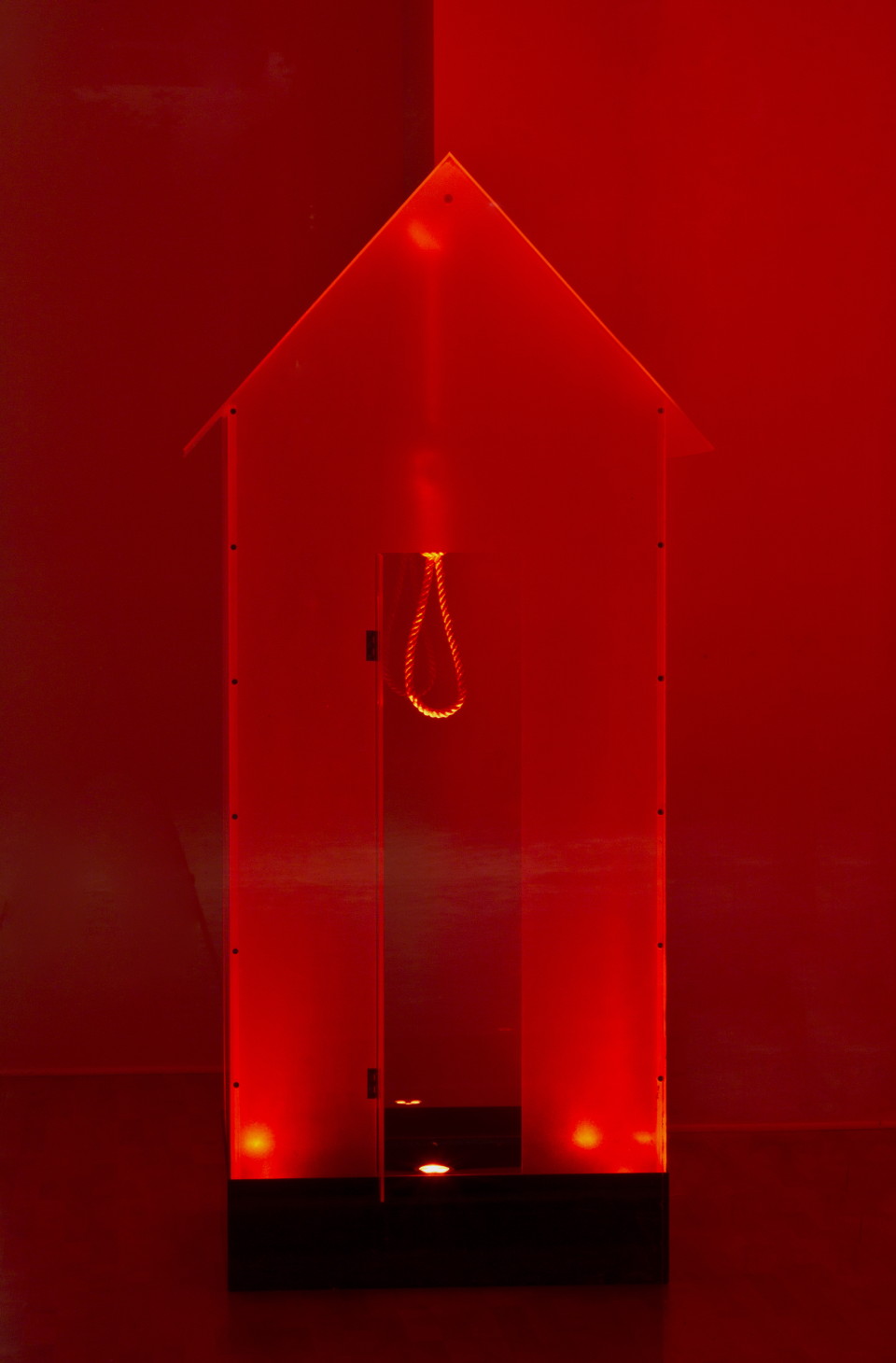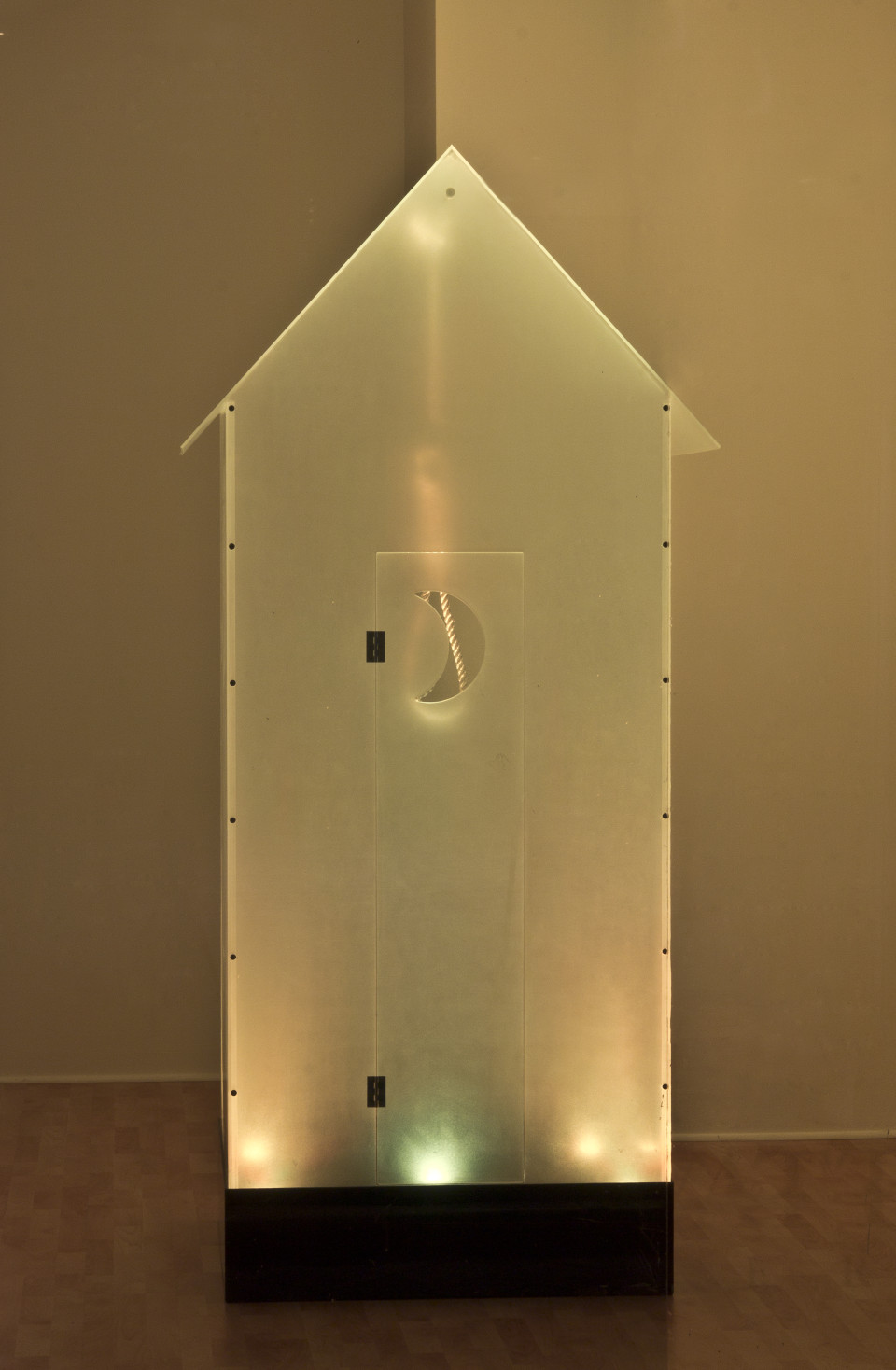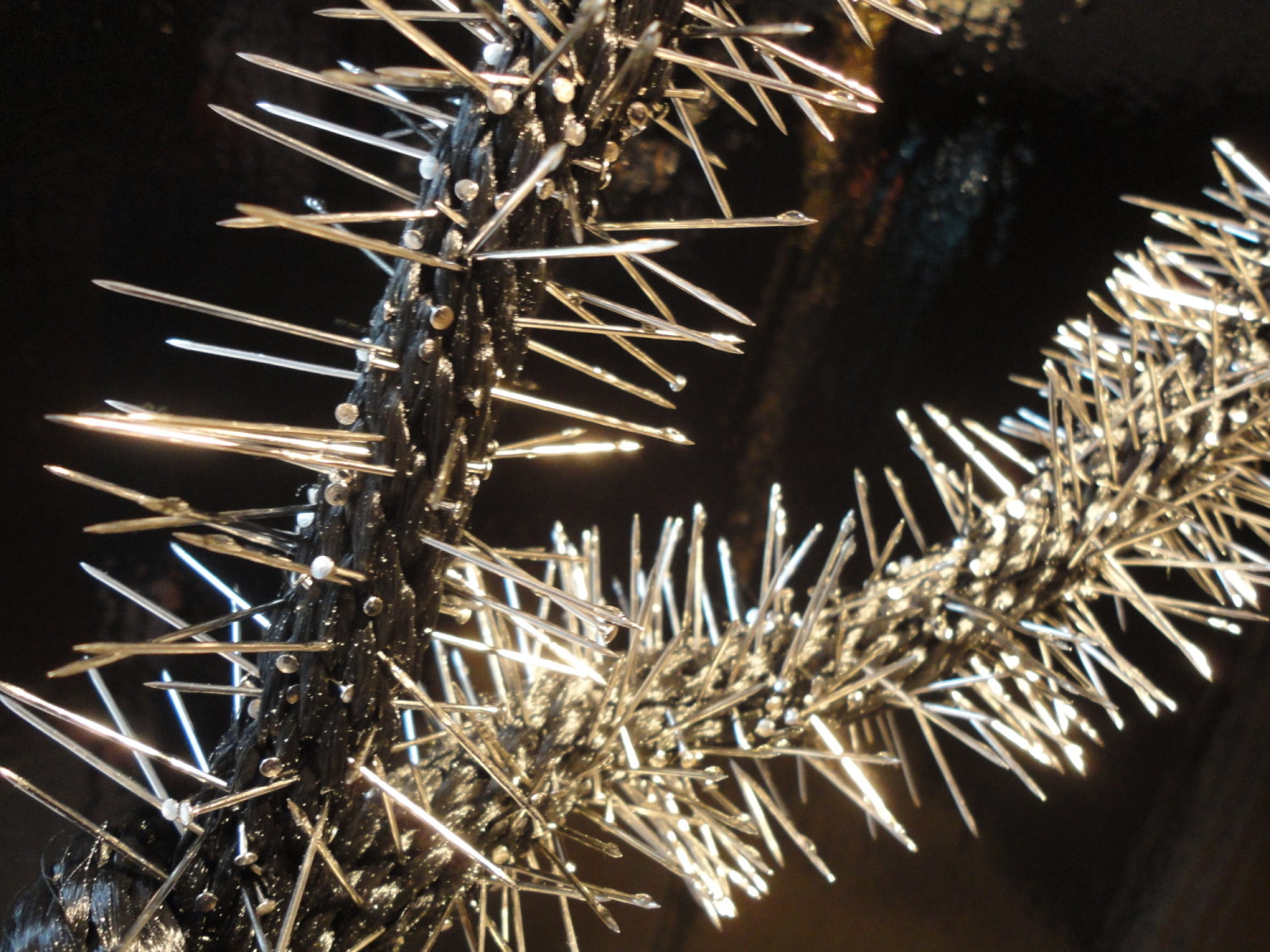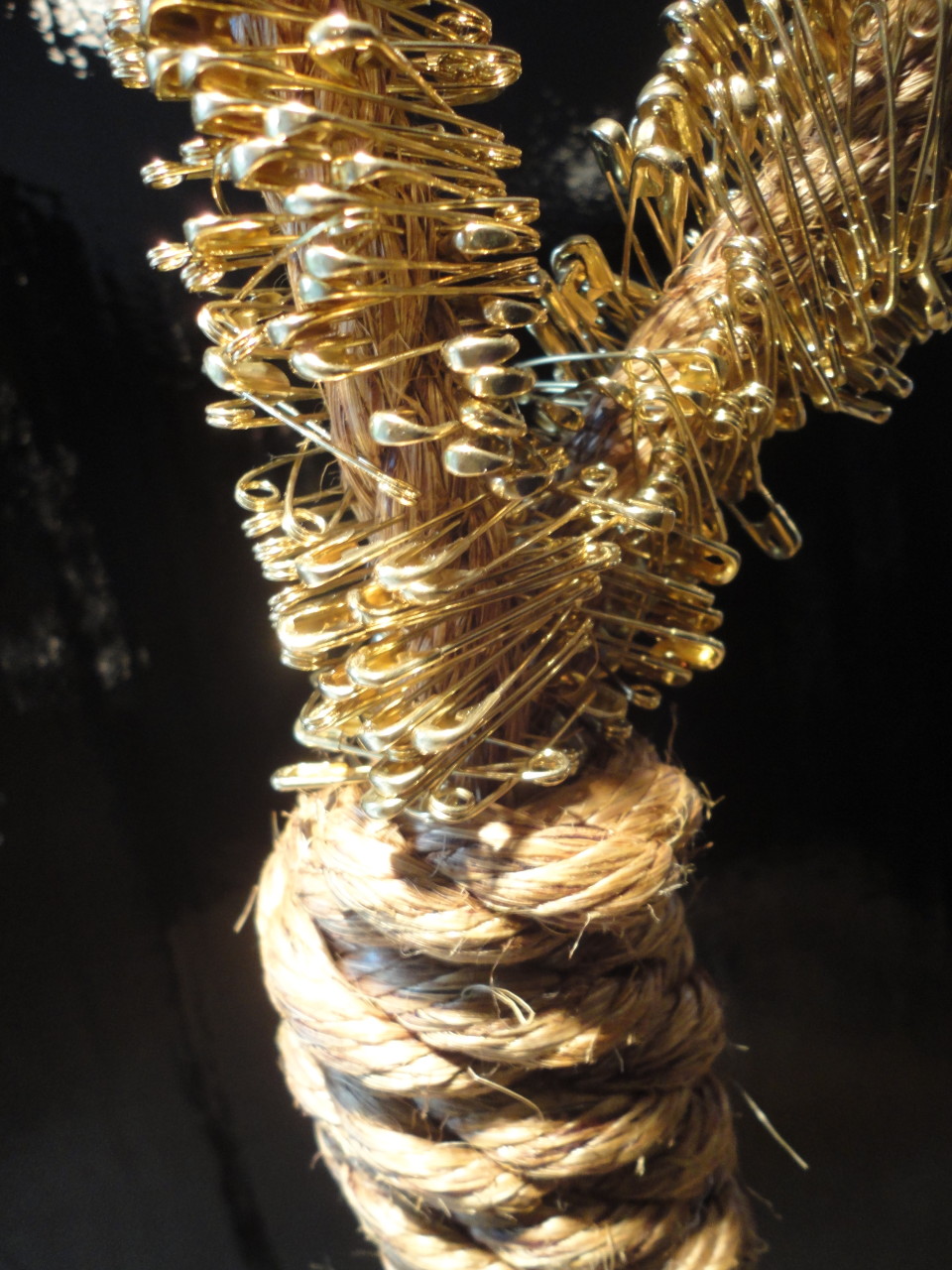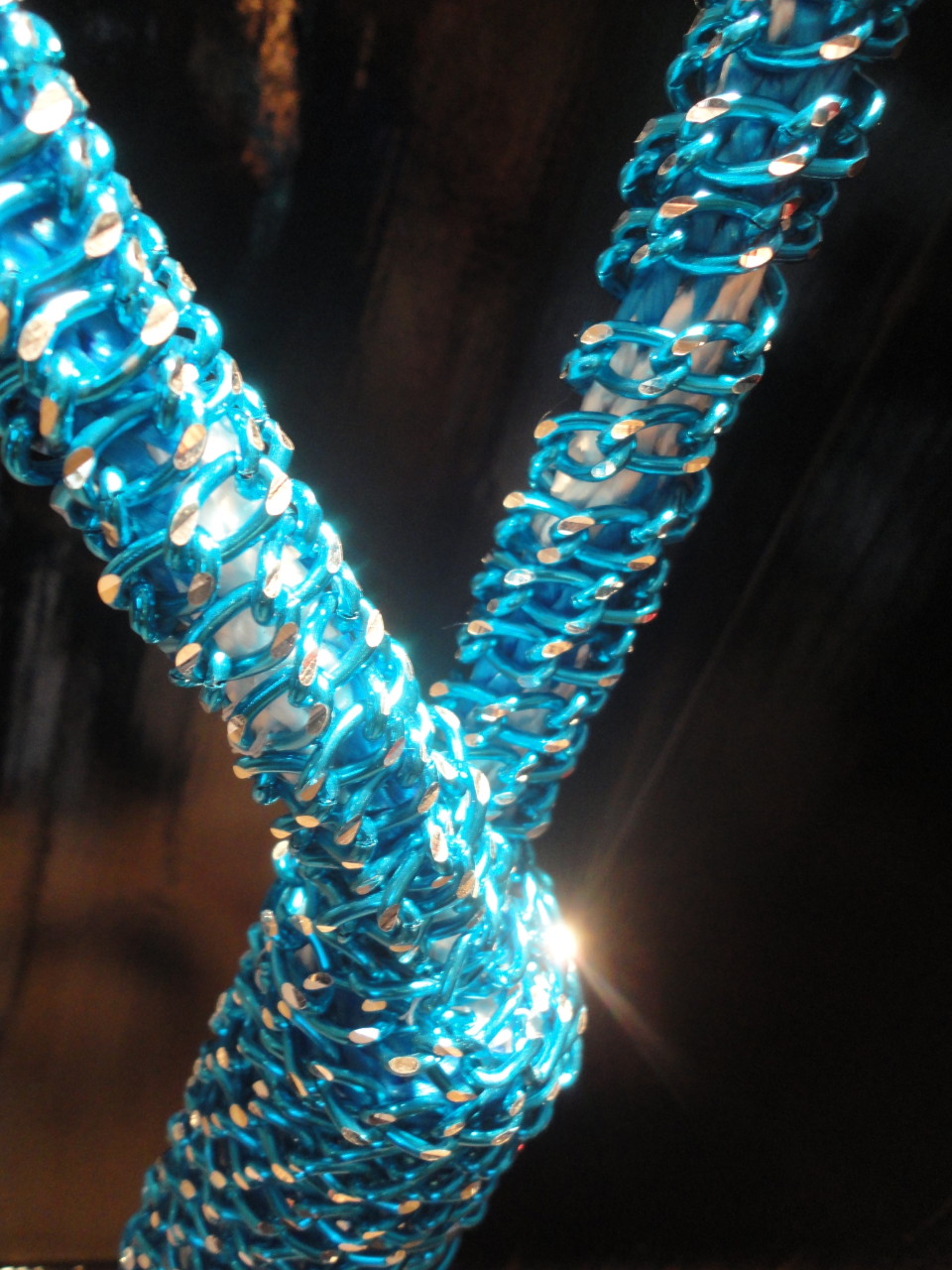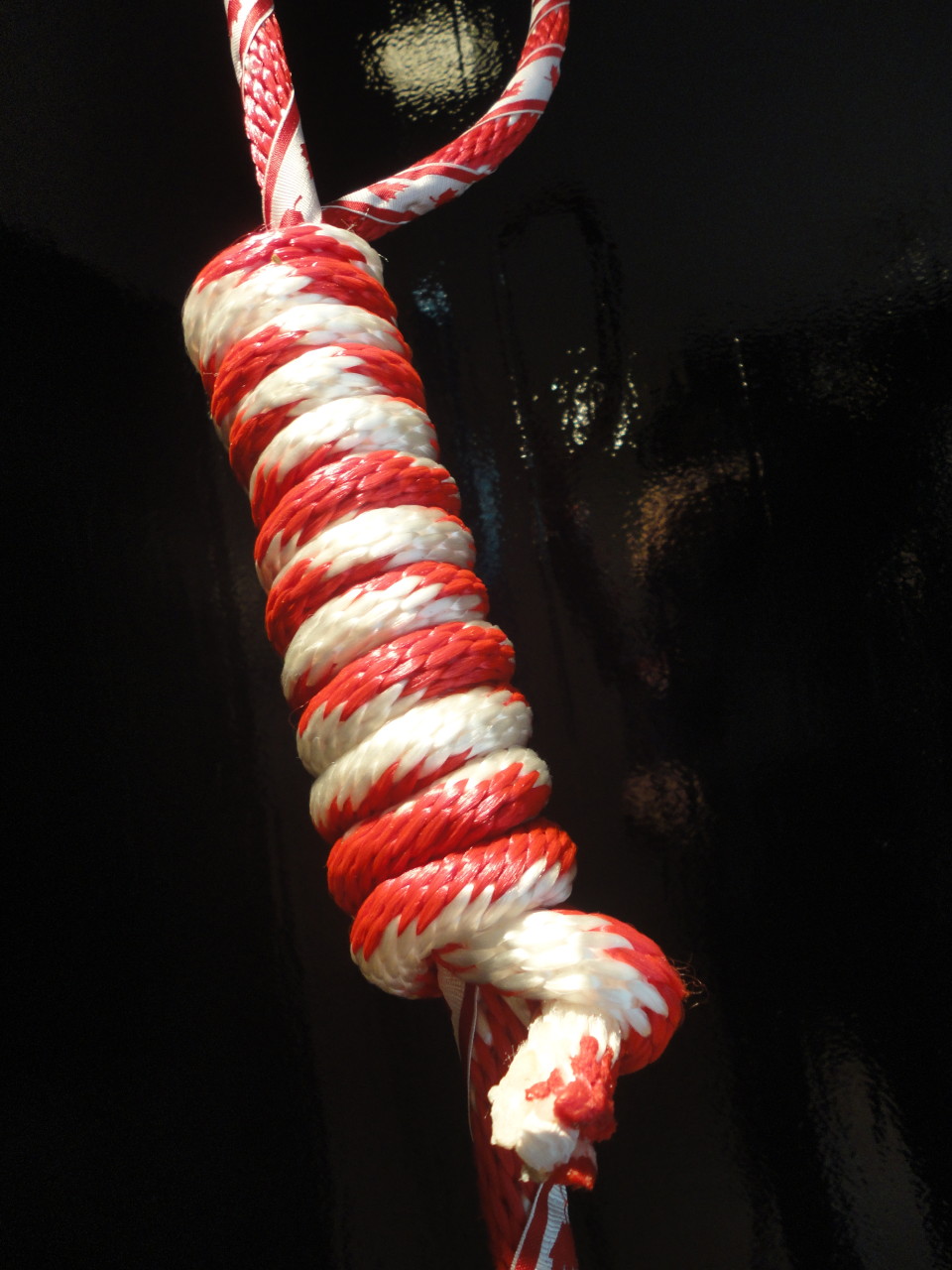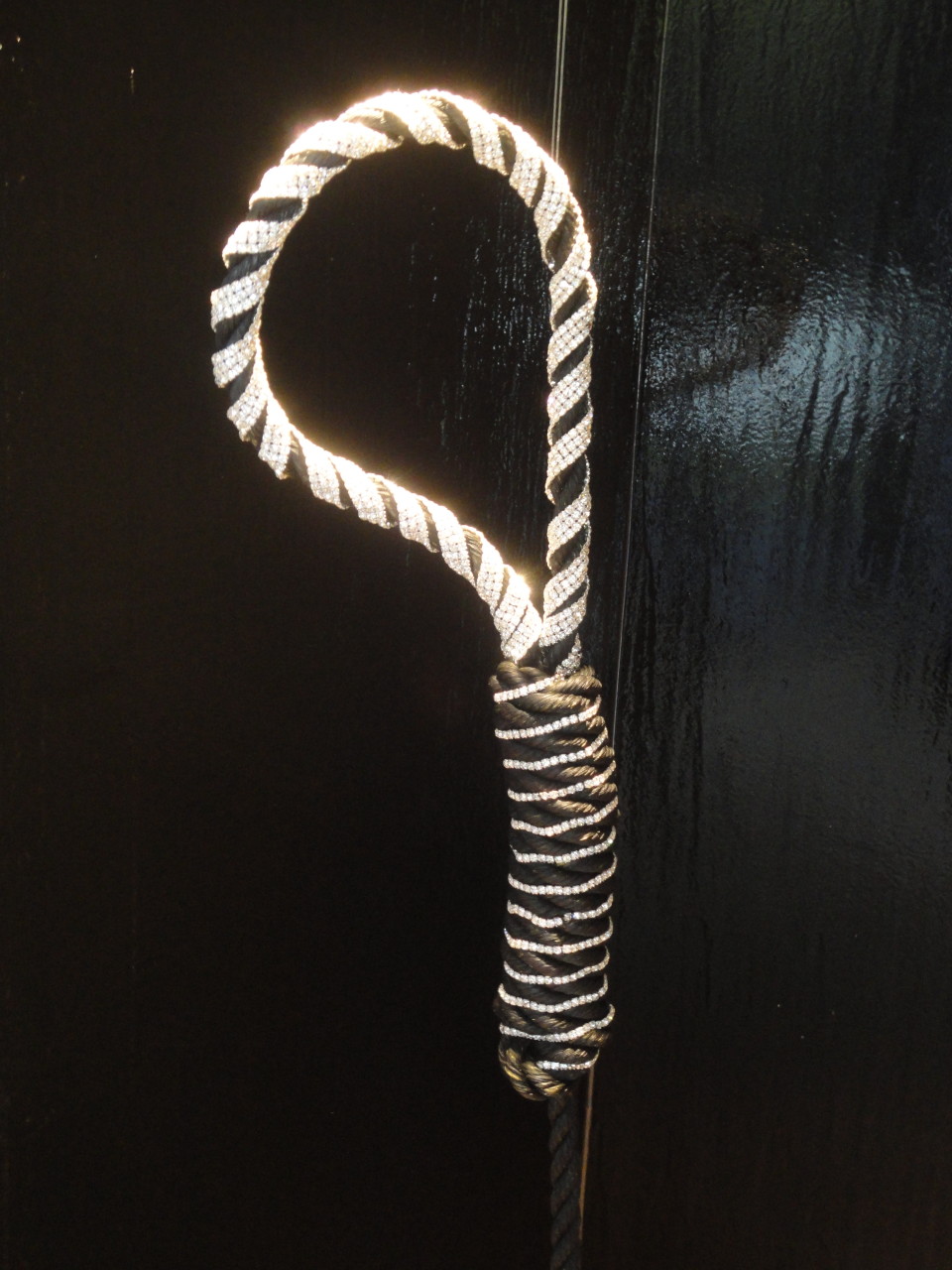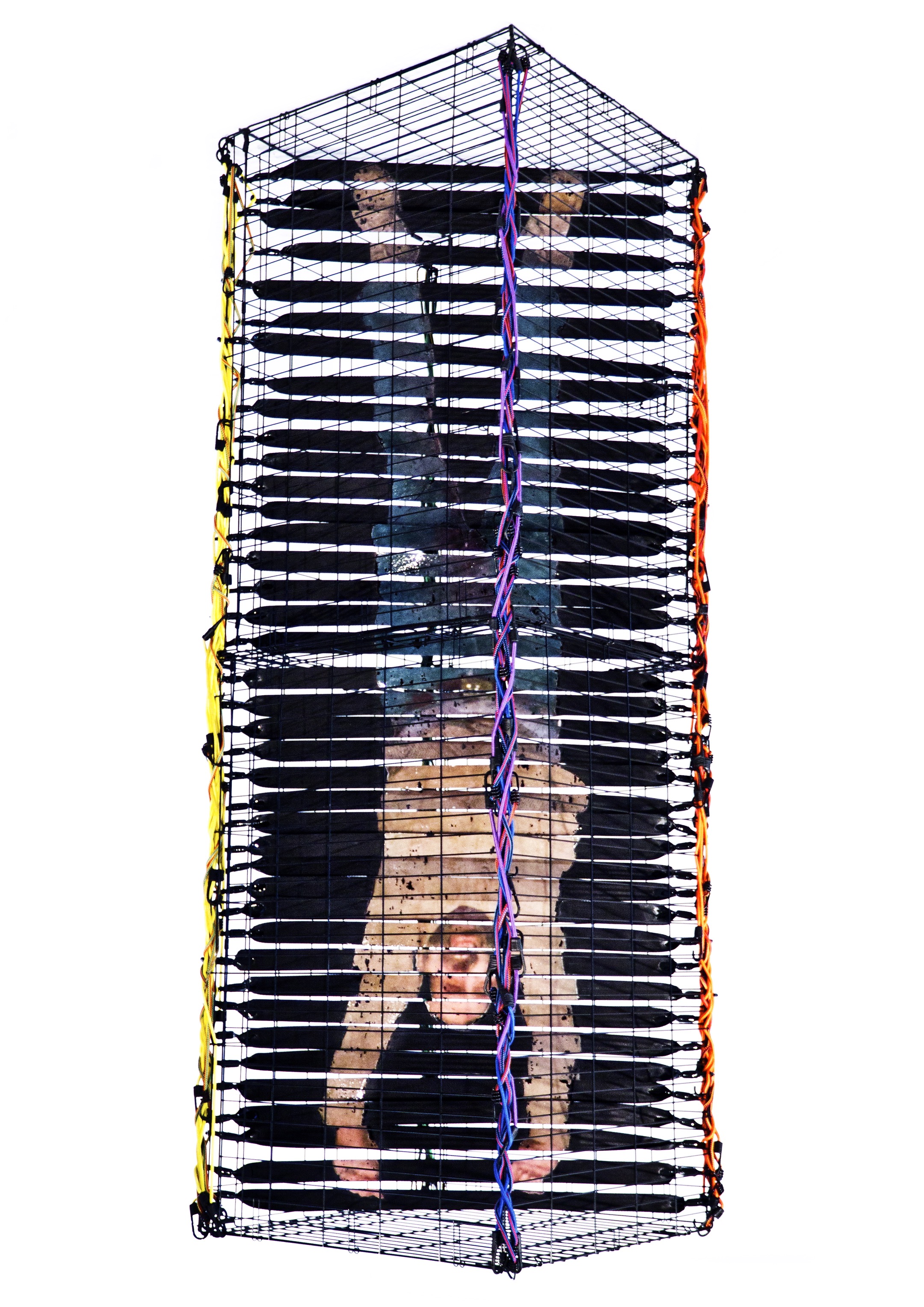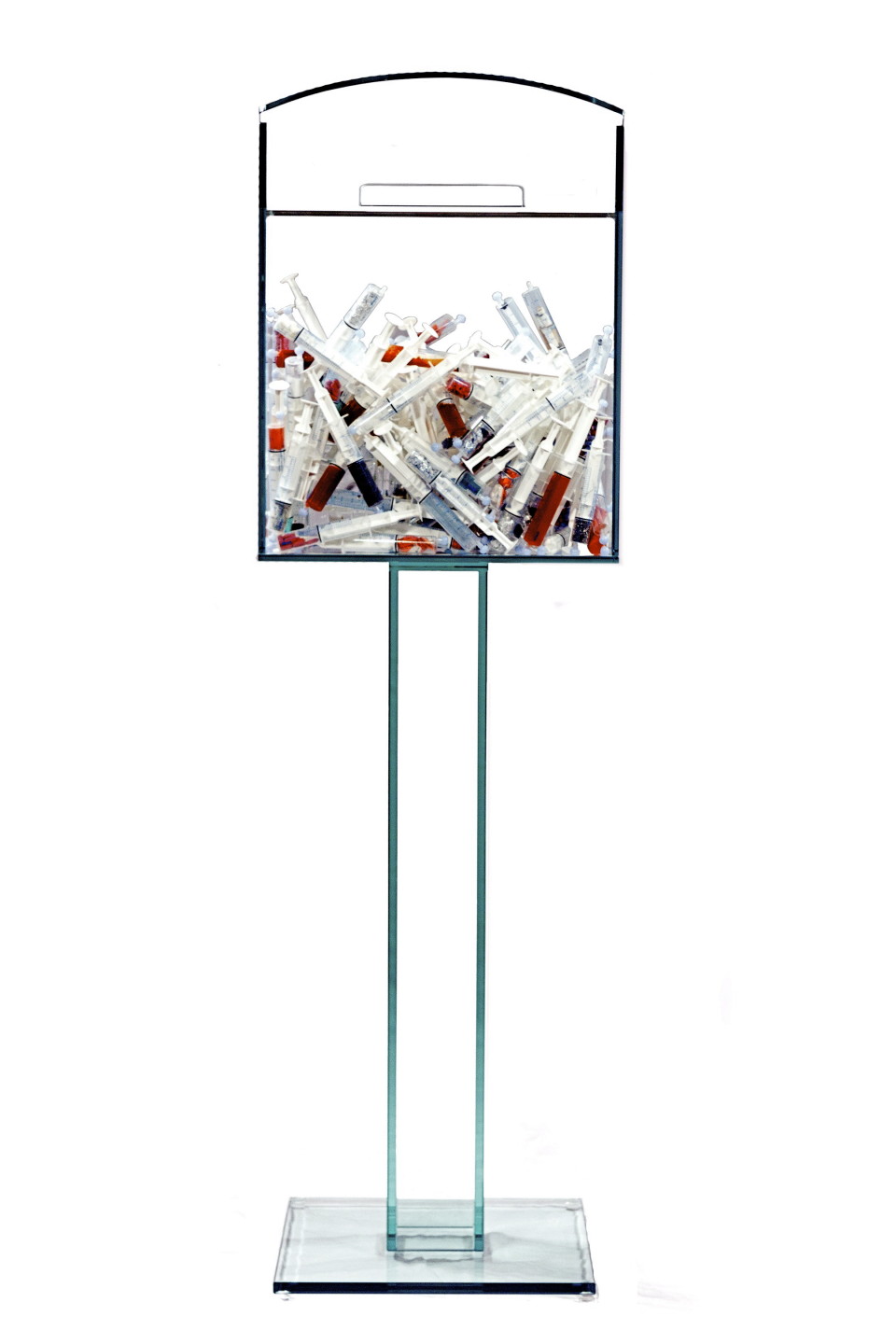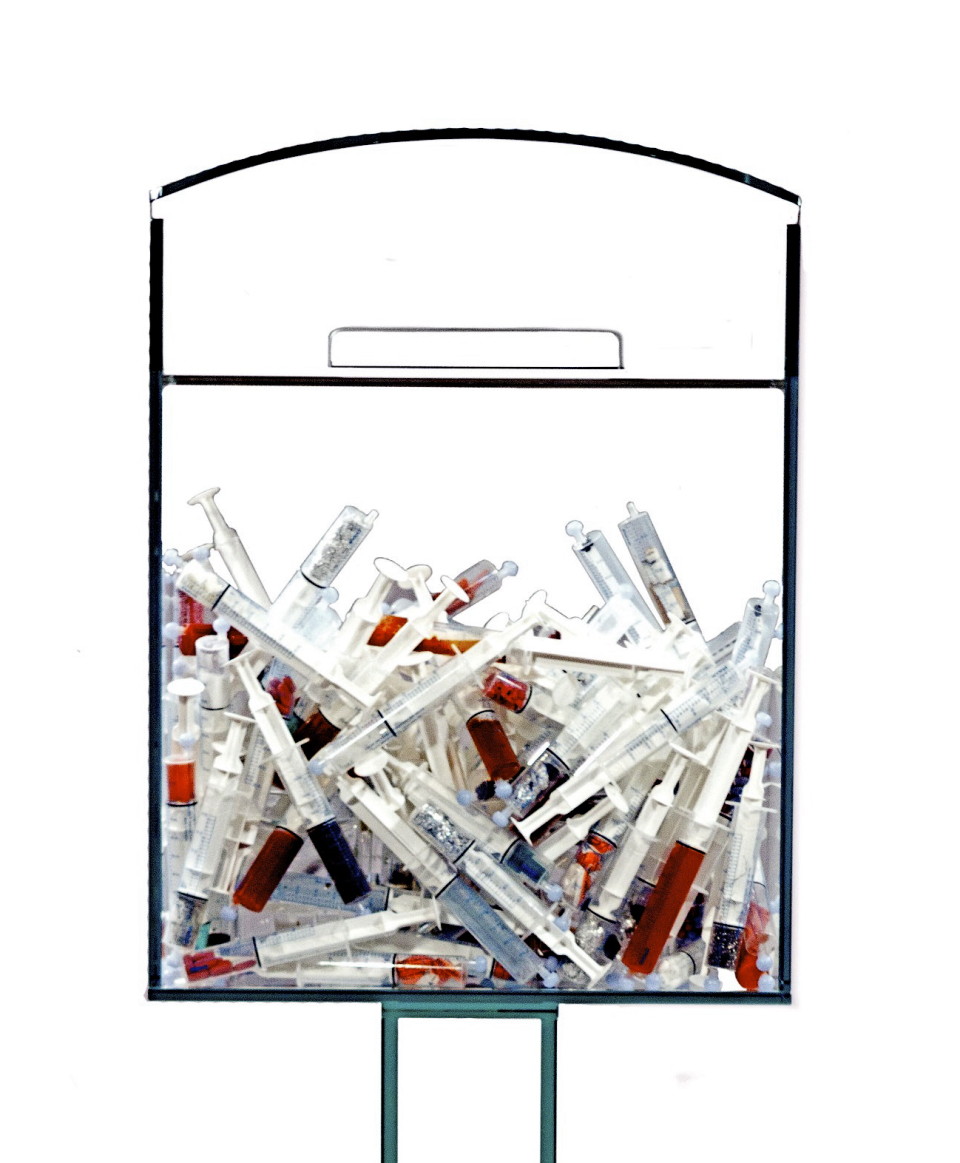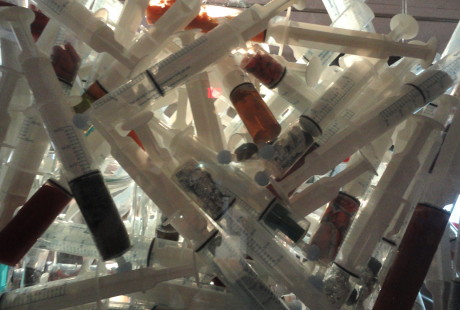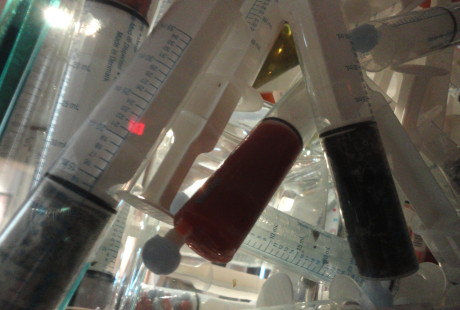John Oliffe
MAN-UP against suicide art
On 18, Jun 2014 | In MAN-UP against suicide art | By foster eastman
A photo exhibition titled Man-Up Against Suicide, led by School of Nursing professor John Oliffe, looks at suicide through the eyes of 25 people who have direct experience with a suicide attempt or contemplation. Also featured are the perspectives of men and women who have lost a loved one to suicide. The stories told through photographs challenge the stigma of mental illness and show that there are alternatives to taking one’s life.
These photo-narratives were created in collaborating with artist Foster Eastman and participants of different ages and backgrounds who have been affected by male suicide. Using transfer and layering techniques these richly nuanced images evoke multiple meanings for the viewer.
EMILY: Losing her father to suicide, Emily, the light of his heart, is distraught. In this image we see Emily, fingers interlocked, hands facing outward, the words ‘sad’, ‘angry’, ‘lost’, and ‘broken’ inscribed with permanent marker on her palms, on her lifeline, expressing what her covered mouth and silenced voice does not. Juxtaposed upon her fathers’ headstone, she peers out at us from within his tomb, where part of her remains there with him. The horror and sorrow of his act is as everlasting upon her mind as the granite engravings bearing his name are incised upon her flesh.
KEVIN: Caught up in the maelstrom of despair, getting sucked into the inky darkness, lost and alone, and in pain, it is easy to act out of character, to be impulsive and irrational. Caught unchecked, we may do something we regret or worse, something more decisive and sinister; we may end up instigating our untimely end. This image asks us to STOP! To consider our actions, and to DIAL! Reach out and ask for help, to connect to someone else on the other end of the receiver. The smiley face takes central prominence in this image, and the letters ‘ TO ‘ encourage us and offer the promise that “TO DIAL IS TO SMILE”.
BRAD: This artwork explores the dynamic tension between the artists’ perceptions of himself in contrast with the perceptions held of him by his family and friends. We see him standing under a streetlamp, illuminated by the light that pushes away the darkness, obscured though he is by the shadows cast upon him from that light. Similarly, although he considers himself to be in the dark, in the shadows, his family see light in him. Their spotlight and attention is on him, they look up to him and place their hope in him. The subject is pushed back behind an abject and visceral lymphatic red that oozes and weeps and stains, like the blood of his pain, and the boundaries and bindings of his relations. The scarlet hue also alludes to ‘seeing red’ highlighting underlying frustrations and anger, as well as the seeping away of one’s vitality and life force, like spilt wine, from the allure of intoxicants, which deceive and obscure one’s clear perceptions. The lettering is thus deliberately obscured, faded, and in places, worn away, illegible and clipped. We can just make out the phrase, “Suicide eliminates the possibility of life getting better,” a hopeful reminder that, although difficult at times to observe, the promise of life’s light beckons.
JASON: He used to sit here, spending his time reflecting, and breathing, and simply being. Then one day he ended it. He ended it here, right over here at these chairs. In the reflection of the mirror I see myself in him, and I try to understand but cannot. I try to see life as it was for him, and try to feel his wounds, his sufferings, his deep, deep pain, but I cannot see anything besides the empty chair where he once sat, his heart still beating its rhythmic beat, his lungs like bellows pumping breath into his being. I look in the mirror and all I can see now is emptiness, the emptiness of his final moments, the emptiness of his fading memory. 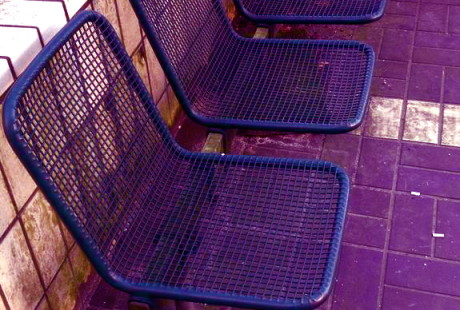
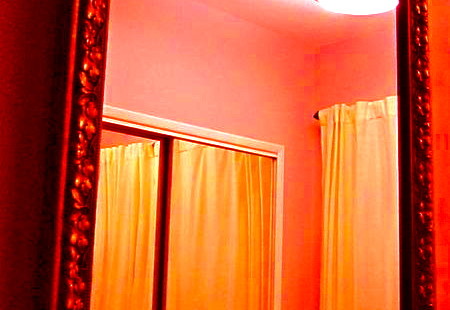
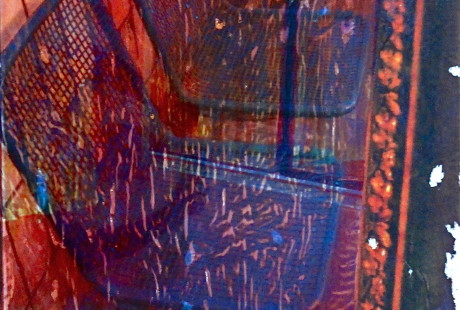
BENNY
PHIL: Like cutting through twine with sharp scissors, severing ones lifeline is a swift and irreversible act; a commitment once made that cannot be retracted. How many stand hovering at the ready, scissors in hand? This photo collage signifies the choices we are faced with, to cut ourselves out of, or to embrace and fight for this bittersweet life. Juxtaposed upon the scissors, is a pair of running shoes, running shoes that pound the roads of life’s long and winding contours, shoes that lead sometimes up, and sometimes down, through beauty and treachery, through ecstasy and agony. It may be that the choice to live is the harder path, it requires effort and dedication, persistence and devotion, and yet whilst treading through the spasms that living often sends, we may remain ever hopeful that life’s purity and sweetness lingers at each new bend in the road. Both possibilities exist; the shoes and the scissors are both within reach, but one is redolent with promise and hope whilst the other, sharp and cold, promises nothing.
PHILIP: This triptych gives visual representation to the advancing journey of life in the wake of someone who has terminated his or hers. The artist expresses the regrets and unmet longings of his companionship with his friend with whom he can no longer share in the sweetness and sorrow of their unmade memories; memories that could have been but are not. Just as the man in the images loses focus as he comes closer, so the memory of his friend loses focus and fades with the passing time. The staggered lettering both legible and fading, are taken from a poem that the artist wrote to his departed friend; “You could not wait to be taken, so you wrapped Death’s arms around your neck. I wish you had waited. Is that selfish? You rushed ahead to the end of your journey. You will not come this way again. I wish you were here.”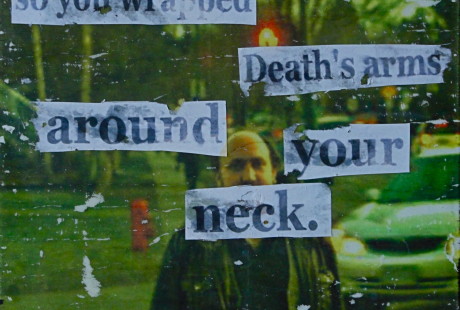

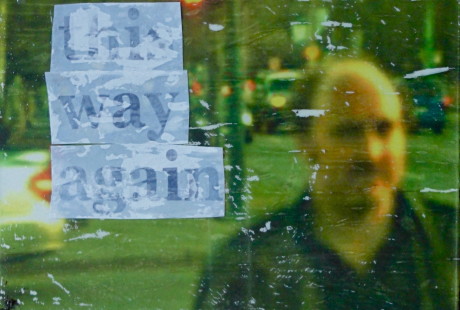
DAN: Humans are social beings it is said, and yet how we isolate ourselves in our suffering! Friends and family, and lovers even, can remain completely oblivious to turmoil stored close to the heart, and hidden from sight by curtains drawn and doors closed. When we become estranged from our loved one’s, and disassociate from activities that we once enjoyed, and friends that matter, we lose an important part of ourselves. Our friends and family can help us feel more fulfilled as humans, they can help uplift us, and offer a different perspective. They can help us to laugh, and enjoy making memories together. This image shows a block of apartments, each dwelling connected to and yet detached from the others, a community of inhabitants of strangers. The apartments then, flipped and mirrored, create a central focus. This generates the sensation of tunnel vision, similar to that which a socially isolated person develops. Superimposed upon this is the word family, with each letter depicting a different member of a family; if one member is lost, the entire word is incomplete, the unit is broken and each member feels the drastic impact. But by reaching out when we are at our lowest and feel most vulnerable, we can count on the support of the people that care about us. This image asks us to trust other’s more.
CONNOR: The lone man in the sublime mountainous terrain, surrounded by inverted text in a reflected sky, the words wrapping around his body as he walks on, eyes on the ground oblivious, summits yet to scale. Falling into depression can invert our perceptions of our world and isolate us in the overwhelming vista of insurmountable obstacles. We may feel lost in the wilderness of our own making, stuck in the valleys of our thoughts, left without the energy or willpower to climb to the peaks of our Being. But rigid attachment to the landscape that we have created can cause us to atrophy. This image reminds us to be flexible in how we focus our mind. It reminds us to not walk blindly through life, to stop and notice the details that are easily missed, when we focus into the distance. It reminds us to appreciate the tiny pebbles at our feet, and the wind on our cheeks. It reminds us to enjoy our walk though life. Being mindful of the little things can help us to re-orientate our perspective on the bigger things; it helps us to appreciate the wonder of every step forward on our climb
CURTIS: The metaphor of light and shadow is a recurring theme in discussions surrounding depression and suicidal thoughts. The shadow is our nemesis that reverberates in our minds when we think too many dour thoughts, and that drags us down, that hides our true nature beneath our belittled and belittling selves. The light is the person we aught to be, but also the person we already are, if we would but show it. The shadow is not as real then as the light for this artist, because it is only in the presence of the light that we can make our shadow, it is only due to our being light that we can perceive our flawed self and acknowledge our imperfections.
http://www.manupagainstsuicide.ca/wp-content/uploads/2014/09/MUAS-exhibit-catelogue-FINAL.pdf
Man-up Against Suicide exhibit
On 14, Jun 2014 | In MAN-UP against suicide exhibit | By foster eastman
The MAN-UP against suicide exhibition tell stories based on photographs taken by participants willing to share their experiences with suicide…either directly with suicidal thoughts or by losing a male family member or friend to suicide. This exhibit has been created to stimulate conversation and help reduce the stigma surrounding depression.
OUTHOUSE
He hung himself in an outhouse, this man of whom it was said lit up a room with his presence. Standing in memorial, this illuminated outhouse, filled with light, shines as a shrine to the spirit of Jessica’s lost friend. His means of death, the rope, is subtly visible, diffused and faded. It serves to remind us of his decision in parting with this world, as does the structure of the outhouse itself, as his untimely tomb, flashing red lights as a warning. Yet both the outhouse and its rope are faded from prominence beside the light that sacralizes this structure as a shrine and suffuses its surroundings with its warm glow, radiating out and filling the room beyond.
ROPES
A rope wrapped in chains alludes to the relations that bind people, relations of love and relations of entrapment, the invisible tethers that feed and tug on our heartstrings. For some the pain of love is too great a burden to bear.
A conjoined rope with both ends in loops asks the question of whether suicide is hereditary? Is this tendency to end ones life passed down from generation to generation? Are people born with a genetic predisposition to terminate themselves?
Another rope is pierced with safety pins; their sharp points deftly concealed in their catch mechanisms. How many safety pins some may apply to hold together the unravelling strands of their lives, trying desperately to keep it all together, fixing the weathering tears with care. For some there may be nothing left but the residue of these attempts; they have disappeared underneath their anti-depressant medication and psychotherapy, and lost themselves.
A rope studded with pin points facing outwards, indicates not only the physical pain of death by suicide, but indicates too, the more insidious, long-term psychological, emotional and spiritual pain which lead some to take their lives. The pinpoints facing outwards also indicate the radiating influence of this pain upon friends and family, as well as the defence mechanisms deterring those who reach out to help.
BUNGEE CHORDS
Every week Doug’s friend Ron would get paid and go on a drug binge. Every week Ron’s high would crash into a suicidal low. Doug thinks of his relationship to Ron as being on the end of a bungee cable, as Ron struggled back and forth with his desire for life. So actual bungee cables, aptly, were used to signify the back and forth of their shared experiences. Full life size images of them falling, are set on bungee cables, with safety belts that seem to say, “Strap up, for the ride!” These are set inside animal cages, which are reminiscent of happier times they shared together visiting pet stores. The cages also signify the risk of getting trapped by the constraints of our perspectives, and so Ron and Doug face opposite directions, signifying their different outlooks. For Doug, there is always a way out, and so his side of the cage has a doorway, an actual opening, a literal exit, whilst Ron’s side has none. Through Doug however, holding onto his end of the bungee chord, Ron has a chance to find a different perspective, and hopefully too, the way out.
NEEDLE REPOSITORY
This artwork documents in a very visceral sense, the self-destructive journey deliberately undertaken by a man intent on punishing and destroying himself. Most people do not know that the back alleys of the downtown Eastside are equipped with needle repositories as a means to prevent needle sharing amongst drug addicts. Normally hidden, this particular needle repository is the centrepiece of the room, commanding our awareness of it. It is also raised above eye height, asking us to look up at it and not, as we would otherwise, look away from or down to it. Normally durable, this needle repository is made of glass. It is fragile, easily shattered and broken, which is analogous to the vulnerability that the people living in the downtown Eastside deal with on a daily basis, as well as the vulnerability experienced by all those opening up to conversations that are uncomfortable and upsetting to discuss. Normally opaque, this needle repository reveals its contents, which contain actual memorabilia from the lives of those living and shooting up in alleyways and doorways. Each syringe, shows us a mysterious world, and alludes to layers of people and places with stories and experiences, both human and horrific. The traces of life on the streets are amalgamated into a haphazard conglomerate of the vestiges of the discarded, and yet collected, categorized, contained, and protected remains.
EVERY THING IS NOT GOING TO BE ALRIGHT
This art piece was a knee jerk reaction to a neon sign created by Martin Creed for the Rennie Collection at Wang Sang in Vancouver which said ‘everythingisgoingtobealright’. This blanket statement may be true when discussing minor life challenges, but when it comes to trauma and/or traumatic events, everythingisnotgoing to be alright.
This sign hung for 2 years until one day it mysteriously fell off the wall…thus completing the installation.

Multimedia artist Foster Eastman in his gallery, where UBC’s Man-up Against Suicide exhibit launched May 29, 2014.

